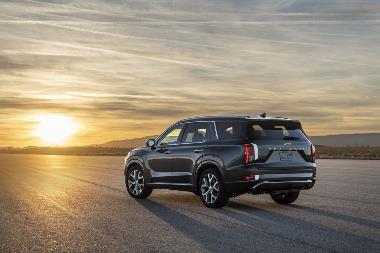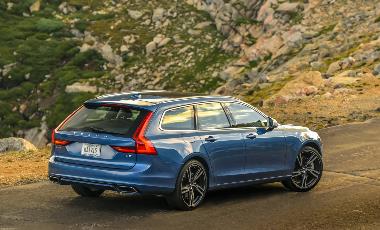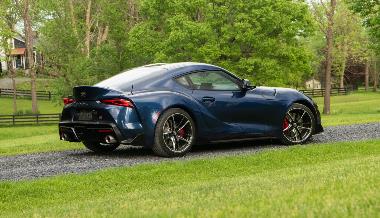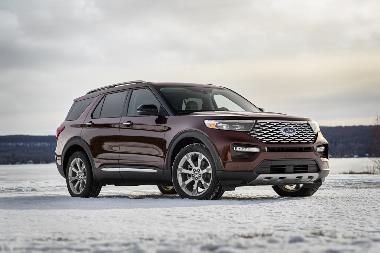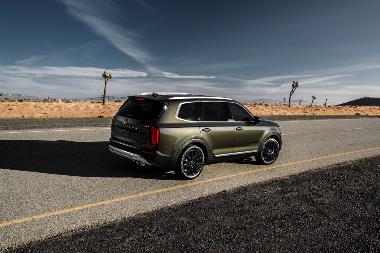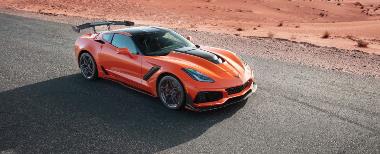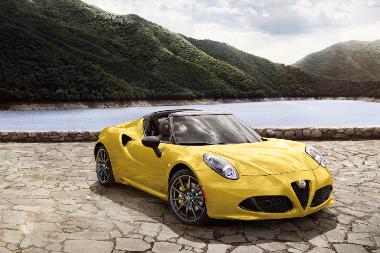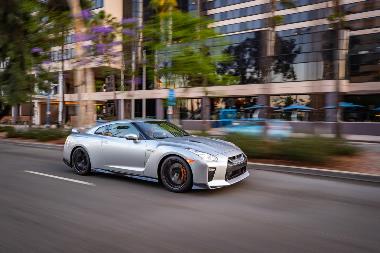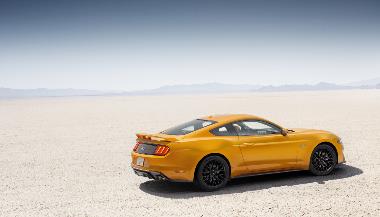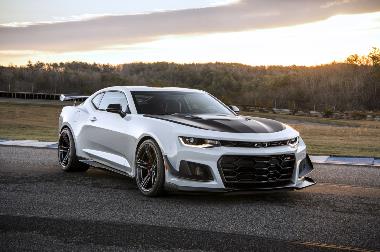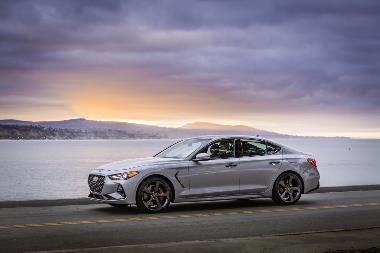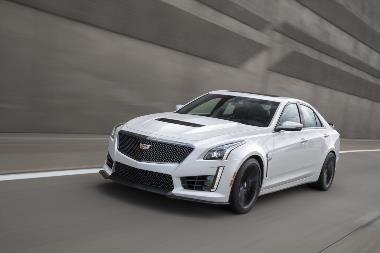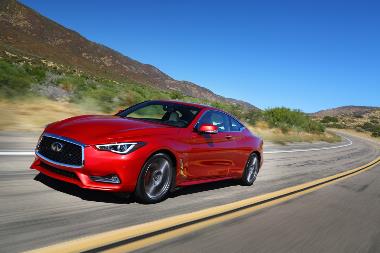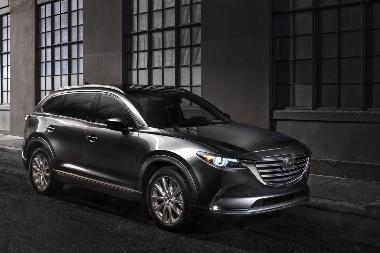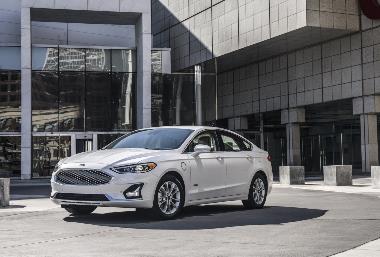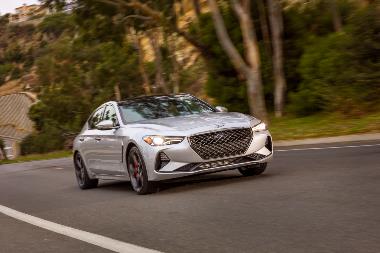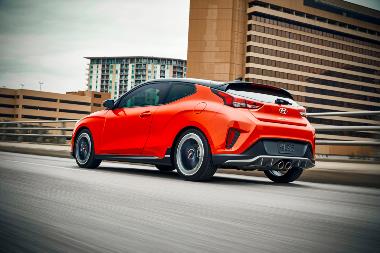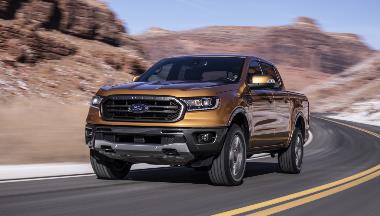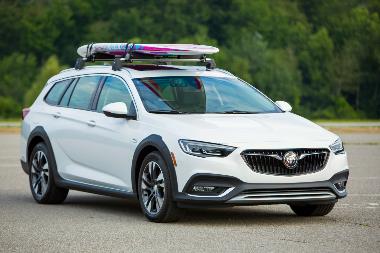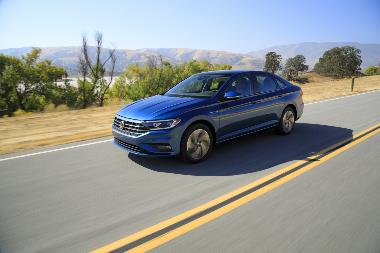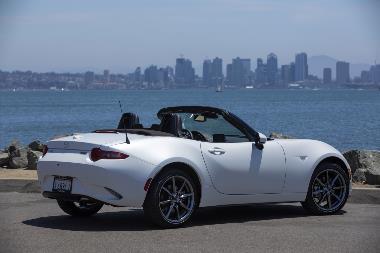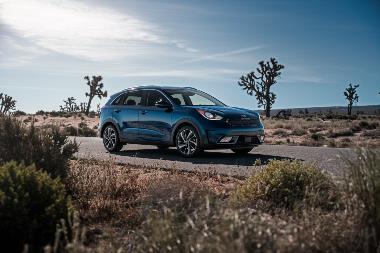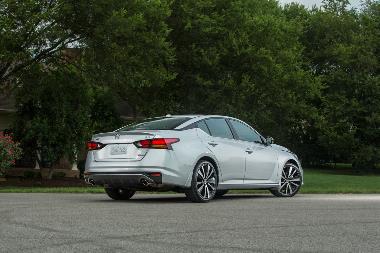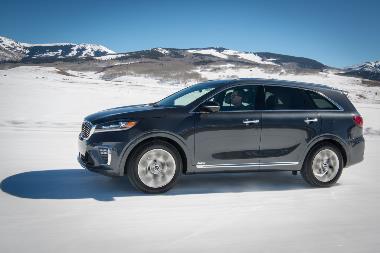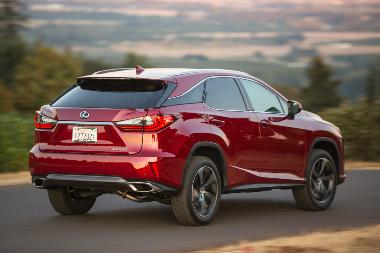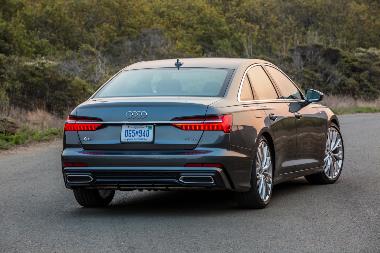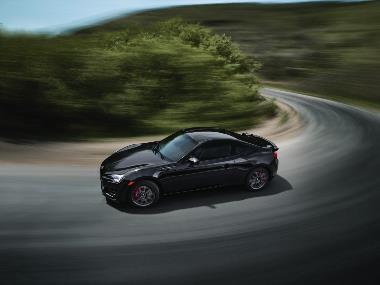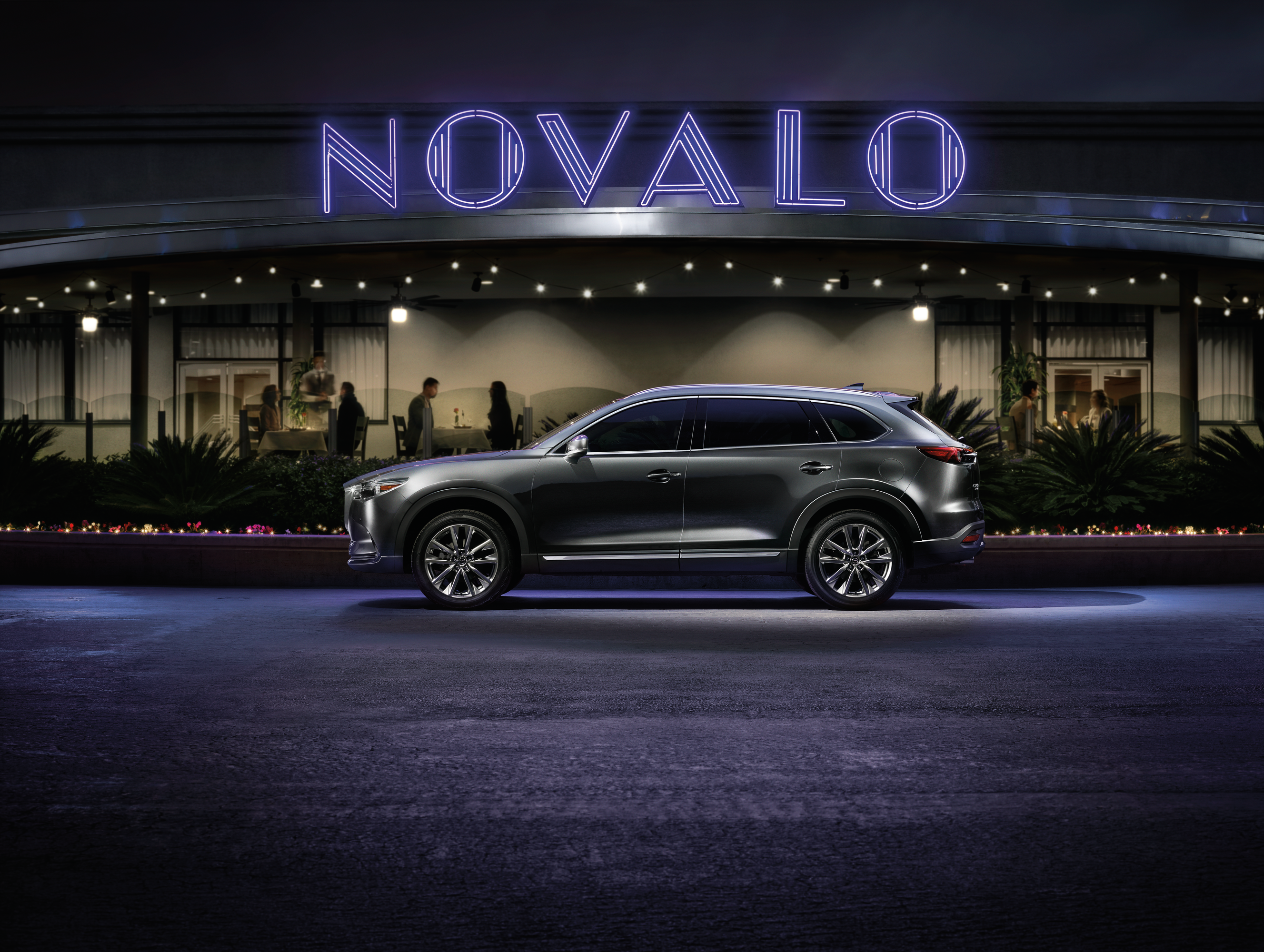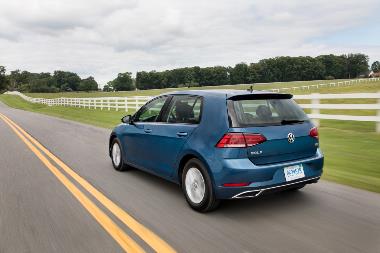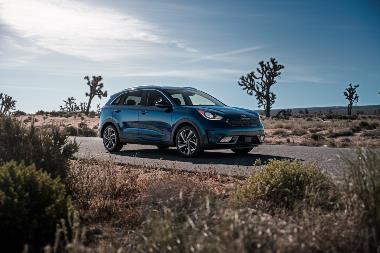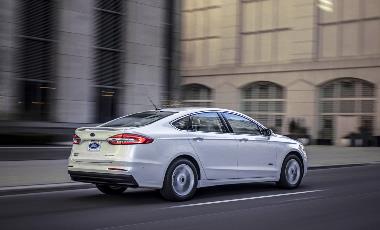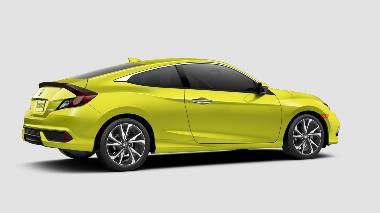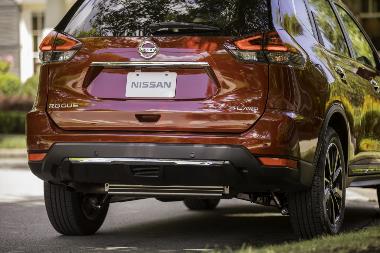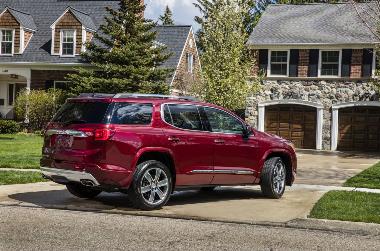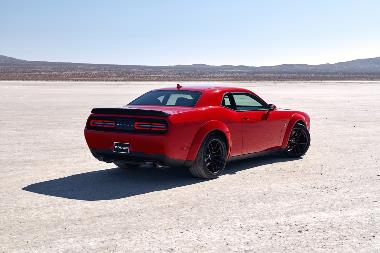
-
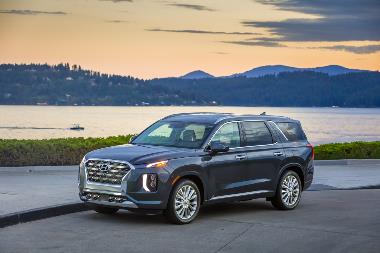
2020 Hyundai Palisade: All-new Midsize Crossover Brings Luxury and style to the Segment
Tuesday, Jan 28, 2020
There’s a new SUV flagship in the Hyundai fleet, as the all-new Hyundai Palisade enters the line-up, replacing the Santa Fe XL. Created as a roomy …
Show MoreThere’s a new SUV flagship in the Hyundai fleet, as the all-new Hyundai Palisade enters the line-up, replacing the Santa Fe XL. Created as a roomy three-row midsize sports-ute with premium appointments and a quality ride, the 2020 Hyundai Palisade offers luxury, high-tech, infotainment and safety with bold styling.
Mike O’Brien, vice president of Product, Corporate and Digital Planning, Hyundai Motor America said, “The new 2020 Hyundai Palisade clearly evokes design imagery worthy of Hyundai’s flagship SUV, with new levels of all-road, all-weather capability, technology, safety, roominess and efficiency, all packaged in cutting-edge design. (It) is the ultimate family vehicle for practical, comfortable daily use and memory-making road trips whenever the appeal of the open road should beckon.”
Palisade comes to market with seating for up to eight and vast cargo space with convenient features including power third-row seats and One-Touch second-row seats for ease of use. All Palisade trims offer a host of safety and tech accouterments, and my test Palisade in Limited trim, was loaded with 7-passenger seating, dual sunroof, 12.3-inch fully digital instrument cluster, Heads-Up Display, Premium Nappa Leather seating, Lane Keeping Assist, Blind-Spot-Collision avoidance, 8-way power driver seat and heated front seats, and front and rear dual automatic climate control.
Additionally, the trim came standard with the Convenience Package -- 20-inch alloy wheel, auto-leveling rear suspension, LED taillights, front parking sensors, hands-free liftgate with Auto open, 7-inch high-res cluster display, Ultrasonic rear occupant alert, rear side window sunshade, wireless device charging for Qi-supported devices third-row USB outlets and more. Additionally, the trim level came from the factory with the Premium Package installed – Bi-LED headlights, leather seating surfaces, 8-way power passenger seats, integrated memory system for driver seat, heated second-row seats, third-row power seating, heated steering wheel, premium dashboard and premium door armrests.
Palisade’s styling is confident and bold, with a cascading grille, separated composite headlamps and a vertically-connected forward lighting signature. Muscular from front to rear, a powerful, extended hood profile creates an impressive road presence, while bold C-pillars and a panoramic glass side graphic convey generous third-row spaciousness, and panoramic rear glass coupled with a cutaway roof provides a generous sense of spaciousness to rear passengers. With a curbweight of 4284 lbs., Palisade measures 196.1 inches long, 77.8 inches wide and 68.9 inches high on a 11.4-inch wheelbase, with a ground clearance of 7.9 inches.
Inside, Palisade combines a sense of relaxation and comfort with 7- or 8- passenger seating, uptweaked materials, power seats, environmental controls, available second-row captain’s chairs with ventilated seating and tons of connectivity, infotainment and safety items at your disposal. And Two Bluetooth® devices can be connected simultaneously, with one for a mobile phone connection and the other for audio streaming.
Comfort also comes in Palisade’s dimensions: front headroom is 40.7 inches, with 40.1 inches in row two and 37.2 in row three. Legroom is roomy up front at 44.1 inches and row two at 42.4 inches, and tight in row three at 31.4. Shoulder room a spacious 61.2, 60.8 an 55.2.
Palisade power is strong for the niche – more standard horsepower than its top six competitors. The system employs an Atkinson-cycle 3.8-liter V6, dual CVVT, direct-injected engine that produces an estimated 291 horsepower and 262 lb.-ft. of torque and is mated to an eight-speed automatic transmission with a multi-plate torque converter for either two-wheel or HTRAC® four-wheel-drive configurations. My test was EPA rated and 19mpg/city, 24mpg/highway and 21mpg/overall in AWD. My week of testing on weather-impacted roads averaged 23.9mpg.
In a quiet cabin, my Palisade passed highway vehicles with confidence, the Motor-Driven Power rack-and-pinion steering was predictable and responsive for the niche and the independent suspension leveled most road irregularities, though there is occasional float at high speeds.
At the track, acceleration is steady, but not spectacular. The system brought my SUV from zero to 60mph in 7.3 seconds (hand-timed), during a 15.7-second (hand-timed) quarter-mile … not bad for the segment.
Safety is well-attended with such on-board systems as Blind-Spot Collision-Avoidance Assist, Rear Cross-Traffic Collision-Avoidance Assist, Parking Distance Warning – Front and Reverse, Ultrasonic Rear Occupant Alert, Forward Collision-Avoidance Assist with Pedestrian Detection, Lane Keeping Assist, Driver Attention Warning, Safe Exit Assist, Highway Drive Assist, Trailer Sway Control, Anti-lock Braking System with 4-wheel disc brakes, Electronic Stability Control with Traction Control Support and Brake Assist, Vehicle Stability Management, Tire Pressure Monitoring System with individual tire indicator, Power window lock-out button, Rear child safety locks, Advanced dual front airbags with Occupant Classification System, Dual front seat-mounted side-impact airbags, Front and rear roof-mounted side-curtain airbags with rollover sensors and Driver's knee airbag.
The 2020 Palisade starts at $31,775 for the base SE trim. The SEL trim starts at $33,725 and the upscale Limited trim starts at $44,925 and comes with the Convenience Package (normally $2200) and the Premium Package (normally $2400). In Sierra Red, with a Black Nappa Leather interior, my fully-loaded test Palisade Limited trim added HTRAC AWD for $1700, carpeted floor mats for $160, mudguards for $120 and a Freight charge of $1120, for a sticker-as-tested of $48,025.
> Visit www.CarlisleEvents.com for more on the automotive hobby.
Mike Blake, former editor of KIT CAR magazine, joined Carlisle Events as senior automotive journalist in 2004. He's been a "car guy" since the 1960s and has been writing professionally for about 30 years. </I>
-
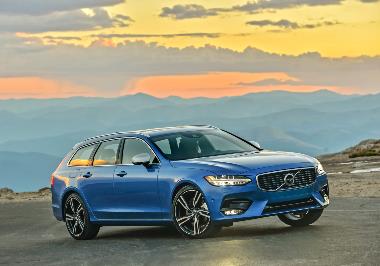
2020 Volvo V90: Family Luxury Car … is it a Crossover or a Wagon?
Tuesday, Jan 21, 2020
The Volvo V90, marketed by the Swedish automaker since 2016, is a mid-size luxury wagon, often referred to as a Crossover. A big brother to Volvo's S9 …The Volvo V90, marketed by the Swedish automaker since 2016, is a mid-size luxury wagon, often referred to as a Crossover. A big brother to Volvo's S90 sedan, the V90 in AWD is designed for use on rough terrain, unsealed roads and for light off-road usage. Since Crossovers have more buyer appeal than Wagons, we can excuse Volvo for blurring the designation of V90, but either way, this luxury family car has appeal and capability. So much so that Digital Trends.com named the Volvo V90 “Best Luxury Family Car”.Show More
I tested the 5-door Cross Country trim and found it to be a rugged, all-weather, all-luxury vehicle that belies its wagonesque guise. The V90 Cross Country employs Volvo’s design face, and includes the manufacturer’s iconic “Thor’s Hammer” LED headlight design, a spiffy grille and Euro-sculpted design cues. In the cabin, Volvo has taken the clean, Scandinavian interior design of its XC90 model and added new details on the dashboard and instrument panel, including new air blades that stand vertically on each side of the Sensus® user interface. And all new Volvos are now connected, thanks to Volvo’s connectivity and infotainment system (Sensus®), which delivers an intuitive touch screen interface that combines car functions, navigation, connected services and in-car entertainment applications such as Spotify, Pandora, Baidu or TuneIn. The portrait-oriented touch screen enables easy and fast access to a host of functions and features. Smartphone integration with Apple CarPlay and Android Auto is also available.
Introduced in 2018, and remaining largely the same as it was in 2019, the 2020 V90 adds new active safety features; new gloss-black mirror caps, window trim, and integrated roof rails in the R-Design trim and an available Park Assist Pilot option that assists with parallel parking and adds a front camera and audible proximity-warning alert to aid front parking.
My test V90 Cross Country comes base with a 316 hp engine (see below), automatic transmission and AWD, 19-inch matte tech black diamond cut alloy wheels with six double spoke,; leather upholstery, Black Walnut décor inlays, dual integrated tailpipes, Lane Keeping tech, color coordinated rearview mirror, touring chassis, high-performance audio system and more.
Weighing in at a robust 4400 lbs., the Volvo V90 has dimensions of 60.7 inches high, 194.4 inches long and 75.9 inches high on a 115.8-inch wheelbase. Ground clearance is 8.3 inches.
Volvo power comes in the form of either a turbocharged 2.0-liter in-line 4-cylinder engine that delivers 250hp and 258 lb-ft of torque for a fuel estimate of 23/city, 31/highway and 26mpg overall; or a supercharged and turbocharged in-line 4 that is good for 316 horses and 400 lb-ft. That’s the one that powered my AWD test ride, and it lived up to its EPA ratings of 21/city, 31/highway and 25mpg/overall with a snowy-terrain average of 26.2mpg.
Possibly a full second quicker on the track than its little brother engine, my super-turbo accelerated responsively and seamlessly to a 5.8-second zero-to-60mph run and a hand-timed 14.4-second quarter-mile. In low ranges, there are some hesitations, but the ride is velvety smooth. V90’s Electric Power Assisted Rack and Pinion Steering is predictable and stable, and the Double Wishbone Front Suspension, Coil Springs, Hydraulic Shock Absorbers and Stabilizer Bar work in concert with the Integral Axle Rear with Transverse Composite Leaf Spring, Hydraulic shocks to provide a luxury ride for driver and passengers.
The cabin carries on the luxury demeanor with elegant Dark Walnut trim, a host of infotainment, connectivity and safety features, and 69 cu. ft. of cargo capacity. But the low roofline yields headroom that only measures 37.8 inches up front and 37.7 in row two; leg room is spacious in row one, at 42.2 inches, but only 35.9 inches in the rear seats; and shoulder room is 57.5 in the first row and 55.9 for the rear seats.
The base 2020 Volvo V90 starts at $52,095 and the base V90 T6 Cross Country starts at $55,195. Denim Blue metallic exterior paint added $645 and worked well with the Blonde Leather and charcoal interior with Black Walnut inlays; dual exhaust pipes (I don’t see the need for a family wagon, but that’s how it was outfitted) added $245; side exterior scuff plates added $935 and front and rear mud flaps added $200. Park assist Pilot added $200; a 14-speaker premium Harmon Kardon sound system added $800; and Polestar Performance Software for $1295 that is designed to create a more precise and balanced driving experience, optimizing mid-range engine performance, gearshifts and throttle response. Now, we get pricey, as my ride added one of two available tech packages. The Advanced package added $2450 for full LED Headlights with Active Bending Lights, 360º Surround View Camera, Headlight High Pressure Cleaning and Graphical Head-Up Display. We went without the really cool Luxury package that would have required an exterior color change to Chrystal White Metallic paint, and would have cost $4500 for Heated Rear Seats, 4-Way Power Front Seats with Lumbar Support and Power Adjustable Side Support, Rear and rear side door Sun Curtains, 4-Zone Automatic Climate Control + CleanZone and lots of interior cosmetics.
With Destination Fees of $995, my 2020 Volvo V90 T6 AWD Cross Country as-tested, stickered at $62,315.
> Visit www.CarlisleEvents.com for more on the automotive hobby.
Mike Blake, former editor of KIT CAR magazine, joined Carlisle Events as senior automotive journalist in 2004. He's been a "car guy" since the 1960s and has been writing professionally for about 30 years. </I>
-
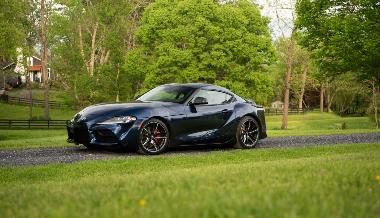
2020 Toyota GR Supra: Back, Sensual and Sportier Than Ever
Tuesday, Jan 14, 2020
The sexy, sporty Toyota Supra began as a longer and wider derivative of the Toyota Celica line-up in 1978, and by 1986, for its third generation, b …
Show MoreThe sexy, sporty Toyota Supra began as a longer and wider derivative of the Toyota Celica line-up in 1978, and by 1986, for its third generation, became its own stand-alone model. From the beginning, its inherent sportiness and turbo power captured the public’s imagination. After a four-generation run, Supra was discontinued in 2002, but it came back to life in May 2019.
The Supra line has been reincarnated as the GR, or GR Supra Racing Concept that is track-ready, but street legal, and features a lowered suspension with Toyota OEM parts, center-lock racing wheels, Brembo racing calipers, a full roll cage and fire extinguisher system, a stripped-out interior, Michelin track tires and a center exit racing exhaust. It also features carbon fiber for the hood, splitter, diffuser, mirror caps, side skirts, wing and bumpers.
Toyota embraces its racing heritage with the GR Supra as “GR” stands for Gazoo Racing -- Toyota's performance partner, and in the car builder’s marketing campaign for Supra: “This Is Our Sport”. Toyota Marketing Group Vice President Ed Laukes, said, “…2020 GR Supra (offers a) rediscovered appreciation for the simple joy of driving.”
Available in three trims: 3.0, 3.0 Premium and Launch Edition, I tested the fully loaded 3.0 Premium with12-speaker 500-watt JBL HiFi Surroundsound system, 8.8-inch Touch-Screen With Supra Command -- Featuring Touchpad Control With Navigation, AM/FM, Digital Audio, SiriusXM®, Wireless Apple CarPlay® Compatible, Voice Recognition and USB /Bluetooth Connectivity, Full-Color Head-Up Display, Qi-Compatible Wireless Charging Tray With Light Indicator, heated Black Leather-trimmed sport seats, wireless charging and tons of connectivity from Toyota Supra Connect®, featuring Emergency Calling, Battery Guard, Remote Control Lock/Ventilation, Real-Time Traffic Information, Map Updates, Concierge Service, and Toyota Supra Online (Services Available Online; App Available for iOS Only).
Supra’s look is curvy, sexy and sporty with some architectural influence by BMW and maybe old Z-Cars. In fact, Supra shares a platform with BMW and shows off a wide track and short wheelbase. At 172.5 inches long, 73 inches wide, a road-hugging 50.9 inches high, and a ground clearance of only 4.5 inches, on a compact 97.2-inch wheelbase, Supra is super friendly with the road. With a curbweight of 3397 pounds, Supra has a power-to-weight ratio of 10.14. Now, that 4.5-inch ground clearance means this is a fit-like-a-glove, slide-in-low car. If you are tall, you have to limbo into it, but being of average height, easing into the front seat begins the sensual pleasure of Supra driving.
Exterior highlights include six lens auto-leveling LED headlights (three low-beam, three high-beam), built-in rear spoiler, dual rear exhaust outlets with brushed stainless steel exhaust tips, LED backup light, LED front turn signal indicator and daytime running lights, and LED taillights and rear combination lights.
Power comes from Supra’s direct-injection 3.0-liter twin-scroll single-turbo DOHC engine. The 24-valve inline six-cylinder engine produces 335hp and 365 lb-ft of torque, and has been rated at 24mpg/city, 31mpg/highway and 26mpg/overall – I averaged 27.1 mpg in mixed-use, hammer-down testing. The engine is mated to an 8-speed automatic transmission with paddle shifters as well as manual mode, but there is no traditional manual transmission. Man, I would have liked to have a stick in this beast. What fun that would have been; however, even in automatic, Supra is super.
Going full out on autocrosses and within legal highway constraints, the road grip was superb, the engine is throaty (even a bit noisy in the cabin), and corners well, though high-speed hairpins cause the rear to wag out at times. And Supra’s double-joint-type MacPherson strut front suspension works well with a multi-link independent rear suspension to smooth out rough surfaces and still provide good driver’s road feel.
The manufacturer proclaims zero-to-60mpg times of 4.1 seconds, but my test ride did better than that, and I finished off the sprint in 3.9 seconds, during a 12.4-second quarter-mile.
The cabin is loaded with such niceties as a 14-way power-adjustable sport seat with driver's-seat memory function and lumbar and bolster adjustment, auto-dimming driver's-side outside mirror, automatic rain-sensing windshield wipers, dual zone automatic climate control, smart key system with smart entry and start, large knee support cushions and leather-wrapped 3-spoke steering wheel. The coupe’s interior dimensions are 38.3 inches of headroom, 54.4 inches of shoulder room and 42.2 inches of legroom.
Safetywise, you get Toyota’s Driver and Front Passenger Advanced Airbag System with front, side, curtain and knee airbags. And Supra provides Tire Pressure Monitor System, Anti-Lock Brake System, automatic high beams, directional parking lights, Lane Departure Warning with Steering Assist, Pre-Collision System with Pedestrian Detection, Rearview Camera with Parking Aid Lines, Traction Mode and Vehicle Stability Control
The 2020 Toyota GR Supra 3.0 starts at $49,990; the GR Supra 3.0 Premium goes $53,990 and the GR Supra Launch Edition starts at $55,250. My 3.0 Premium test ride in Nocturnal Black, and Black Leather-trimmed interior, added the $1195 Driver Assist Package with Dynamic Radar Cruise Control, Blind Spot Monitor, Rear Cross-Traffic Alert, Parking Sensors with Emergency Braking Functions and 50-state emissions compatibility. That’s all the extras needed as it was loaded by the manufacturer. The Delivery, Processing and Handling Fee was $995, for a sticker-as-tested of $56,140.
> Visit www.CarlisleEvents.com for more on the automotive hobby.
Mike Blake, former editor of KIT CAR magazine, joined Carlisle Events as senior automotive journalist in 2004. He's been a "car guy" since the 1960s and has been writing professionally for about 30 years. </I>
-
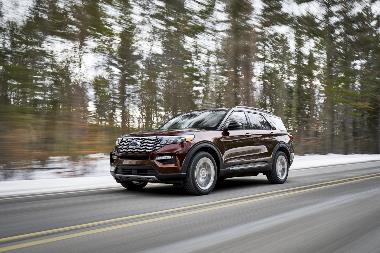
2020 Ford Explorer: Continuing the Adventure with New Style, Power and Capabilities
Tuesday, Jan 7, 2020
After a nine-year run with its fifth generation, the Ford Explorer is all-new for 2020. America’s all-time best-selling SUV has been fully redesign …
Show MoreAfter a nine-year run with its fifth generation, the Ford Explorer is all-new for 2020. America’s all-time best-selling SUV has been fully redesigned and is lighter, longer and more powerful than ever.
The vehicle that is credited with mainstreaming sports utility vehicles, Explorer began as a trim package offered on Ford F-Series trucks from 1968 to 1986. It became its own model line and replaced the Bronco II in 1991 and the mid-size remained the best-selling SUV for two decades and four generations. The 2020 Explorer continues the adventure with new style, power, performance, safety and capabilities, while retaining Explorer ruggedness, toughness and a pampering environment.
There are more than two-dozen new items in the Gen-Six Explorer and seven more have been improved from the previous model. With six trim levels available, the 2020 Ford Explorer has upgraded with four new engine choices, a 10-speed automatic transmission with SelectShift®, Self-Sealing P255/55R20 All-Season (A/S) Tires, standard second-row sunblinds on most trims, standard 360-degree camera with split view and washer on upper trims, Side-Wind Stabilization is standard on all series, adaptive headlamps on the Platinum trim, six new exterior colors and much more.
Built in North America at Chicago Assembly Plant, Explorer’s look remains Explorer confident, with a rear-wheel-drive architecture, athletic roundness and increased aerodynamics. Explorer’s new design is set on a unitized steel body that is larger than before, at 198.8 inches long (a gain of 0.5 – and the ST trim is 199.3 inches long), 89.3 inches wide (including mirrors), which is nearly an inch thinner; and 70.2 inches high (up 0.2) on a huge 119.1-inch wheelbase (a gain of 6.3 inches). Minimum ground clearance is 0.4 inches better at 8.2 inches, and curbweight for the 4WD Platinum version is 4727 lbs. -- the base trim is 382 lbs. lighter.
My test Explorer Platinum exterior was enhanced by body-color door handles with satin aluminum insert, a body-color liftgate spoiler, Satin Aluminum Lower bodyside cladding accent, Quad Chrome Exhaust Tips, a unique grille with satin-aluminum finish, a Hands-Free, Foot-Activated Liftgate, LED Signature Lighting, power folding mirrors with autofold and heated glass, Rain-Sensing Wipers, Rear Bumper Step ,Acoustic-laminate window glass in front and Privacy Glass in the Second and Third Rows.
The 2020 Explorer offers three new engine choices (with four set-ups): The 2.3-liter EcoBoost inline-4 has been uptweaked to deliver 300hp (a gain of 20 horses) and 310 lbs-ft of torque (same as last year); the 3.3-liter hybrid is good for a combined horsepower of 318 and torque of 322 lb-ft; and the new 3.0-liter EcoBoost V-6 that powered my test ride, provided 365 hp and 380 lbs-ft of torque, while another version of the 3.0 thunders out 400 horses and 415 lb-ft for the ST trim. The hybrid is EPA rated at 27mpg/city and 29/highway; the 2.3 gets 21/city and 28/highway and the 3.0 version gets 18 and 24. My test Explorer Platinum 3.0 averaged 20.2mpg in pedal mashing highway, town and soft-road excursions.
The 400hp ST could achieve low 5s for a zero-to-60mph sprint and beat 14 seconds in the quarter-mile, but my 365-horse Platinum was no slouch, as we managed a 6.0-flat dash and a 14.6 quarter (hand-timed). The engine was a bit noisy for a midsize family vehicle, and visibility is impaired by a large C-pillar (rear quarter), but acceleration was predictable and powerful from the 10-speed automatic transmission, though at slow speeds you occasionally get a jump forward as the gears engage.
Inside, the Explorer is roomy, refined and functional with seating for six or seven, and provides a comfortable 40.7 inches of front headroom with 40.5 inches in row two (and 38.9 when there is a third row); legroom is 43.0 inches up front and 39.0 in the second seats (and a tight 32.0 inches in a third row), and shoulder room comes in at 61.8 (row one), 61.9 (row two) and 54.6 (row three)
With five-star safety ratings, Explorer safety features include dual-stage front airbag, front-passenger knee airbag; Safety Canopy® System; SOS Post-Crash Alert System™; Traction control; AdvanceTrac® with Roll Stability Control™ and Curve Control; Anti-Lock Brake System; battery saver with headlamps-off delay; four-wheel disc with Illuminated Entry System; rearview camera; SecuriLock® Passive Anti-Theft System; perimeter alarm; and individual tire pressure monitoring system (excludes spare).
The 2020 Explorer is base priced at $32,765 (RWD) and 4WD adds $2000. The XLT trim raises the RWD price to $36,675 and the Limited trim hybrid goes $48,130. The 400hp ST starts at $55,025 and my top-of-the-line 2020 Ford Explorer Platinum started at $58,535, with Intelligent 4WD, Tri-Diamond Perforated Leather Seating Surfaces with Accent Stitching, Twin Panel Moonroof, Active Park Assist 2.0, Evasive Steering Assist, Remote Start, Heated Steering Wheel, Voice-activated touchscreen navigation and 12.3-inch Digital Cluster. Rich Copper exterior paint added $395; and the Premium Technology Package added $1195 for Multicontour front Seats with Active Motion®, a 10.1inch LCD Capacitive Portrait Touchscreen with Swipe and Pinch-to-Zoom Capability and 14-speaker, 980-watt Bang & Olufsen B&O sound system. Splash Guards added $205 and the sticker added Destination Charges of $1195 and an Acquisition Fee of $645, but regional incentives of $1750 were applied (and may be available, so check with your dealer), making the price-as-tested $60,420.
> Visit www.CarlisleEvents.com for more on the automotive hobby.
Mike Blake, former editor of KIT CAR magazine, joined Carlisle Events as senior automotive journalist in 2004. He's been a "car guy" since the 1960s and has been writing professionally for about 30 years. </I>
-
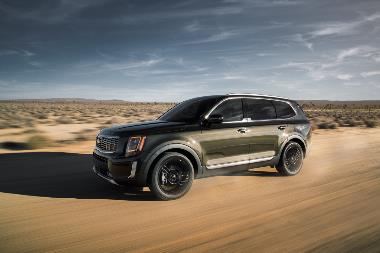
2020 Kia Telluride: Boxy is a Good Thing for this Rugged Luxury SUV
Tuesday, Dec 31, 2019
Named after a rugged former mining town that has become a trendy ski and golf destination in Colorado’s Rocky Mountains, the new 2020 Kia Telluride …
Show MoreNamed after a rugged former mining town that has become a trendy ski and golf destination in Colorado’s Rocky Mountains, the new 2020 Kia Telluride combines luxury, ruggedness and old-school SUV boxiness with power, size and lots of tech to enhance comfort, convenience, utility and the driver and passenger experience.
The Telluride is Kia’s flagship SUV, and that old-school boxiness is a good thing as it stands out from the rounder crowd and proudly announces powerful rugged luxury as it thunders by; and it can haul up to 5,000 pounds, so you can hitch up your trailer for a long journey or weekend getaway.
A mid-size crossover, it is the largest vehicle Kia has produced. Telluride is the first Kia designed specifically for the U.S. and is a product of the Kia Design Center in Irvine, CA. It is marketed as a traditional “big, bold, boxy SUV, with the kind of presence associated with the original legendary SUVs and the go-anywhere, do-anything attitude.” Main design cues include a long, broad hood and wide grille; bold, stacked headlamps convey power and stability; upright windshield and clean side profile express muscular tension; inverted “L” tail lamps with LED stripes and elongated nameplates on the leading edge of the hood and on the liftgate provide distinctive identity for the SUV, and sculpted rear skid plate with integrated twin exhaust tips reference off-road ability and power.
The Telluride interior is designed to continue the impression of upscale exploration, with grab handles integrated into the center console that suggest journeys off the beaten path. A wide console with emphasis on the horizontal through artistic use of premium trim features suggests spaciousness and more “luxe living room” than “utility vehicle”, and the roomy cabin provides generous hip, shoulder, leg and head room, including the third row.
As Kia’s flagship SUV, the Telluride can be outfitted with an array of advanced technology and driver-assistance systems. Many available features are firsts for any Kia SUV, and these are in addition to the long list of tech and advanced driver assistance systems Kia is known for. These items include Blind Spot Collision-Avoidance Assist, Rear Cross-Traffic Collision Avoidance Assist, Lane Following Assist , Safe Exit Assist, Highway Driving Assist, Head-Up Display, Driver Talk, Quiet Mode and Rear Occupant Alert.
With minimum ground clearance of 8.0 inches, Telluride measures 196.9 inches long, 68.9 inches high and a widebody 78.3 inches wide, on a wheelbase of 114.2 inches, and a curb weight of 4255 lbs. for the AWD version.
Inside is a huge expanse filled with comfort and tech. Available double-stitched, quilted and extra-padded Nappa leather trim upholstery mesh with a leather-wrapped, tilt and telescoping steering wheel, available heated steering wheel, simulated brushed metal and matte-finished wood, interior hooks to keep packs and bags off floor and away from feet, available heated and ventilated first- and second-row seats, ceiling-mounted second-row climate control, HVAC diffusing ceiling vents provide wider spread of airflow for increased comfort, reclining third-row seats and all the requisite infotainment and connectivity including Apple CarPlay, Android Auto, a 10.25-inch touchscreen, Park Guidance, a 630-watt audio system with 10 speakers, wireless smartphone charging and multi-Bluetooth connectivity.
With room for seven or eight passengers, the cavernous cabin provides front headroom of 40.9 inches, with 40.2 inches in row two and 38.1 in row three. Front row leg room is 41.4 inches, with 42.4 inches in the second row and 31.4 in the third row. Row one shoulder room is a spacious 61.6 inches, 61.2 in row two and 55.3 in the back. With the third row folded flat there is plenty of cargo room.
Available in four trims in FWD or AWD, Telluride is powered by a 3.8-liter, V6, Gasoline Direct Injection Lambda-II engine that produces 291hp and 262 lb-ft of torque and is EPA rated at 20mpg/city, 26 mpg/highway and 23 mpg/combined. My week of snow-conquering tests averaged 22.6mpg as the bold sports-ute handled gently and smaller than its size, though there is some top-wobble during twisty maneuvers.
Responsive and quick for its size, with a firm ride, my Telluride roared through a zero-to-60mph dash in 7.1 seconds and finished off a quarter mile in 15.3 seconds. There is a slight hesitation when pedal mashing from low speed, but power is never in doubt. The Independent, MacPherson strut front suspension, coil springs with, stabilizer bar and an Independent, self-leveling multi-link rear with a stabilizer bar smooth out road imperfections and steering is predictable and on point.
The 2020 Kia Telluride starts at $31,690 for the LX trim and moves through four trims to the $41,490 SX. My SX came with dual sunroofs, 20-inchBlack sport finish alloy wheels, 12-way adjustable driver’s seat with two-way lumbar support, Harman Kardon® 10-Speaker Premium Audio w/ Clari-Fi™, External Amplifier and Subwoofe, Surround View Monitor and much more. My test ride added all-wheel drive for $2000; the SX Prestige Package for $2000 (automatic rain-sensing wipers, heated and ventilated second-row seats, Head-Up Display, Premium Nappa leather seat trim and more) and Mud Guards for $115. With destination charges of $105, my test 2020 Telluride SX stickered at $46,700.
> Visit www.CarlisleEvents.com for more on the automotive hobby.
Mike Blake, former editor of KIT CAR magazine, joined Carlisle Events as senior automotive journalist in 2004. He's been a "car guy" since the 1960s and has been writing professionally for about 30 years. </I>
-
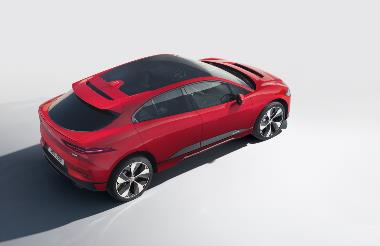
2019 Car of the Year: Jaguar I-PACE: Innovative all-Electric Crossover is Sleek, Fast, Fun and ‘Green’
Tuesday, Dec 24, 2019
Last week, our “Car Buy of the Year,” Top-10 list concentrated on the “best bang for the buck,” with the “green-oriented” 2019 Honda Insight winnin …
Show MoreLast week, our “Car Buy of the Year,” Top-10 list concentrated on the “best bang for the buck,” with the “green-oriented” 2019 Honda Insight winning top honors. This week, we showcase our “Car of the Year” list, in which we focus on the best car, truck, crossover or SUV and what it delivers, regardless of price – just the pure vehicle – and how it feels to be behind the wheel, although we have something luxurious and “green” on the Car-Buy side as well this year.
For our 15th annual Car of the Year list, we see five countries of origin represented with muscle cars, luxury cars, roadsters, convertibles, “supercars” and that “green” crossover. And while power counts – one vehicle at 755hp and three of the 10 over 600 horses – one car made the list with less than 200 hp. As for price, two (not the No.1 pick) was priced over $100,000, but one also stickered under $35,000; and many cars I tested this year that were priced from $60,000 to $125,000 didn’t make the list.
My rules: To make this list, I must have test driven the car in calendar 2019 and it must have stood out from the pack, had something “extra”, surprised me, impressed me, and satisfied the “car guy” in me, as well as amaze any passengers or onlookers who rode in or saw the vehicle. I test drove 56 different vehicles this year, and after a weeklong (in most cases) assessment as a daily driver and/or track car, I graded each ride in the following categories: Interior; Safety; Power; Handling/Ride; Economy/Price; Looks; Niche-fitting and a Miscellaneous grouping in which I took into consideration the “feel-good” factor and other intangibles.
Last year, the 365-hp turbo Kia Stinger combined power, luxury and elegance from a badge not generally considered to deliver those attributes, to win the crown. This year, a racing icon crossed over and went “green” to produce something unexpected and worthy of the title. Prices reflect sticker-as-tested.
- Jaguar I-PACE: All-electric Crossover is innovative sleek, fast, fun and ‘Green’ -- $80,520. In the past, Jaguar “Green” meant British racing Green exterior paint. This year, Jaguar, who earned its rep for creating sleek, catlike, powerful race-worthy sportscars, has moved into a new arena with its new 2019 I-PACE, Jaguar’s first all-electric vehicle, an EV SUV/crossover. Oh, and it is also fun to drive. With all-wheel-drive, two electric motors and Jag’s iconic sleekness outside and luxury inside, I-PACE shows off Jaguar muscle with 394 horsepower and 512 lb-ft of torque while attaining an EPA-rated driving range of 234 miles. I-PACE embodies the Jaguar legacy of luxury and performance. The motors deliver sports car operation, launching the I-PACE from zero to 60mph in just 4.6 seconds in tests. My fun-to-test quarter-mile was accomplished in an un-crossover-like 13.2 seconds, accelerating easily and handling like a sedan.
- Corvette ZR1: 755 horses of futuristic supercar is last of an era -- $130,090. My favorite car to drive all year only lost out for top honors because of my rating system, which counted 13.9mpg lower than electric and 234 miles per charge vs. about the same range per tank, but at $45-50/tank. One car that certainly fits the definition of supercar, in all areas is the 2019 Corvette ZR-1 – and it is among the final C8 Corvettes to be built. With exotic lines, ZR-1 handles like a car destined for the track, but with street-luxury car smoothness for driver and passenger. I blazed through a zero-to-60 sprint in 3.3 seconds for an 11.4-second quarter-mile with ZR1’s dual-fuel-injection, LT5 6.2L V-8 that rockets out 755 hp and 715 lb-ft. Additionally, the cockpit is luxurious and tech-filled.
- Alfa Romeo 4C Spider: Exotic track star that is athletic around town -- $73,195. Building on Alfa’s storied racing heritage, and its history of creating exciting, solid-handling, exotic, athletic vehicles, the 2019 Alfa Romeo 4C Spider offers driving enthusiasts a mid-engine design convertible that represents the essential sportiness embedded in the brand’s DNA. With hints of Lotus and Ferrari -- exotic, this is a feel-good, drive-well car. Its 237hp and 258 lb-powerplant averages 28mpg, and my track runs were timed in 4.2 (sprint) and a 12.8 quarter-mile.
- Nissan GT-R: 565 hp and a video-game design for a superbeast -- $116,320. The 2019 Nissan GT-R is a powerful, sexy, track-handling, tech-advanced, a head-turner and a very fun drive. Designed to compare to video game creations, GT-R is aggressive, sexy, fluid and functional. Its 3.8-liter 24-valve twin-turbocharged V-6 engine delivers 565 horsepower and 467 lb-ft. I turned a sizzling sprint in 3.1 seconds during an 11.2-second quarter-mile and I averaged 17.9mpg.
- Ford Mustang GT: 55 years of Pony Power stays true to the past -- $44,145. The unmistakable Mustang GT look comes at you with an aggressive grille and Pony insert, rounded, sleek lines and muscularity. Athletic and muscular, the Mustang GT’s Pony-Power comes from a 5.0-liter V-8 that galloped out 460 hp and 420 lb-ft, and lived up to its heritage with tire-smoking acceleration and track-worthy handling. I crushed a zero-to-60 sprint in 4.3 seconds en route to a 12.6-second quarter-mile, and I averaged 18.2 mpg.
- Chevrolet Camaro ZL1: American muscle icon powered by 650 horses -- $73,190. Chevy has added new front fascias and grillework on several Camaro trims this year, and added infotainment upgrades and a Carbon fiber rear wing, but Camaro is about power -- ZL1’s standard 6.2-liter LT4 direct-injected V-8 engine is responsive and super-powered, with 650 horses/650 lb-ft of torque. I blasted a zero-to-60mpg dash in 3.3 seconds during a quarter-mile run of 11.3 seconds and averaged 15.4mpg.
- Genesis G70: Performance sedan delivers inside and out -- $51,125. On last week’s list as a Top Buy, the 2019 G70 shows off the manufacturer’s “Athletic Elegance” design signature outside, and a driver-focused experience with high quality materials inside. Its 365hp/376 lb-ft 3.3-liter twin-turbocharged V-6 averages 19.6mpg and finishes off a zero-to-60mph sprint in 4.9-seconds, and a quarter-mile in 13.5. On the highway and around town, Genesis delivered a stable ride with solid balance and attentive handling.
- Cadillac CTS-V: Premier luxury sedan impresses with elegance and 640hp --$92,885. Cadillac’s legacy of building luxury cars is coupled with Corvette-like power with a 6.2-liter Supercharged V8 that thunders out 640 hp and 630 lb-ft of torque in the 2019 CTS-V. Built for performance while pampering with elegant lines, a luxurious interior and state-of-the-art tech and safety, CTS-V’s throaty exhaust note purred during a zero-60mph dash in 3.9 seconds, and a 12.0-flat quarter-mile. I averaged 15.0 mpg.
- Infiniti Q60: Stylish and powerful luxury sport 4-seater -- $52,958. The Infiniti Q60 is a 2-door sport luxury 4-seat coupe with an aggressive stance, low and wide proportions and muscular lines. Some vehicles get 400hp, but my test ride had a 300-hp. 295-lb-ft 3.0-liter V-6. A zero-to-60mph dash takes about 6 seconds, during a 14.5-second quarter-mile, and fuel consumption was 22.8mpg. Its low center of gravity enhances driving dynamics, and is augmented by a well-appointed and comfortable interior.
- Mazda MX-5 Miata RF: Good power in this fun-drive Roadster -- $34,455. The lowest-priced car on this list and a “Top-Buy” member from last week’s list, the 2019 Mazda MX-5 Miata gets a SKYACTIV 2.0-liter in-line 4 electronic fuel injection engine that provides 181-hp and 151 lb-ft of torque, for a zero-to-60mph dash in 5.8 seconds during a 14.5-second quarter. Fuel economy is 30.3 mpg, and you get a cool retractable hardtop roof that makes MX-5 a convertible in 13 seconds.
Next week we begin coverage of the 2020s, and we start rating and reviewing style, performance, nuances, improvements and deals on wheels.
> Visit www.CarlisleEvents.com for more on the automotive hobby.
Mike Blake, former editor of KIT CAR magazine, joined Carlisle Events as senior automotive journalist in 2004. He's been a "car guy" since the 1960s and has been writing professionally for about 30 years. </I>
-
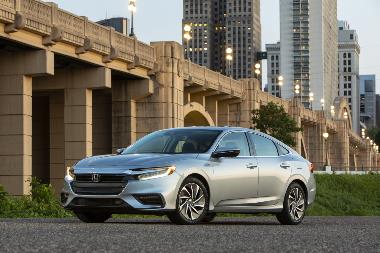
2019 Car Buy of the Year: 2019 Honda Insight Returns as a ‘Green’ Hybrid
Tuesday, Dec 17, 2019
For the 15th consecutive year, ALL ABOUT CARS devotes its year-end columns to an overview of the top vehicles we tested and reviewed for the model yea …For the 15th consecutive year, ALL ABOUT CARS devotes its year-end columns to an overview of the top vehicles we tested and reviewed for the model year. After rating them on such items as: Interior; Safety; Power; Handling/Ride; Economy/Price; Looks; Niche-fitting and a Miscellaneous grouping in which I took into consideration the “feel-good” factor and other subjective intangibles, we have come up with our top 10 vehicles. This week’s column reports on the “Car Buy of the Year”, and next week, we will follow up with our “Car of the Year”, regardless of price.Show More
This week’s “best deals on wheels” for 2019, is all about the best bang for the buck, and that doesn’t always equate with number of sales, as illustrated by the stats that show that this year, the average transaction price of a new vehicle sold in America was about $37,000, and my Top 10 best buys was made of five vehicles under $30,000, three more vehicles in the $30K range but below $37,000, and only two about the average sales price, with one sedan in the $50,000 range. Diversification ruled this year, as we have a wagon, a pick-up, a hatchback, a roadster, two crossovers and four sedans on the list.
To be considered for this list, I must have test-driven the vehicle during calendar 2019, and dollar-for-value, or worth vs. cost carries the most weight, though some abstracts still apply. This year, I test drove 56 vehicles for consideration and examined them for about a week each, using them as daily drivers around town for errands and for maneuvering; on the highway for long trips, for passing, stability and for fun; accelerating them and braking them hard on straight tracks and banked venues, auto-crosses and drag strips, and checking out what passengers and onlookers reported.
Last year, the 2018 Hyundai Kona, Sub-Compact CUV was my best deal, and this year, my best buy was a five-door hatchback that returned from a 5-year hiatus as one of the “Greenest” cars in America.
The winner is:
1. Honda Insight: Former hatchback returns as a compact hybrid sedan -- $26,681. Honda’s Insight returns after a five-year hiatus, evolving from a five-door hatchback into a compact sedan, but with a two-motor hybrid powertrain, featuring a 1.5-liter Atkinson-cycle engine that runs on gasoline, working in tandem with an electric motor and a lithium-ion battery pack. The American Council for an Energy-Efficient Economy named Insight to its “Greenest Vehicles of 2019” list, and Insight achieved top safety scores from the Insurance Institute for Highway Safety and National Highway Traffic Safety Administration. Its sleek lines, coupe-like profile and wide stance communicate a sophisticated yet elegant design. The efficient engine/motor system puts out 151 horsepower and 197 lb-ft of electric motor torque, and my week of tests achieved an average of 46.0mpg. It is a fun drive with quick response and tight corner handling.
2. Ford Fusion: Driver-assist technology and design tweaks -- $26,100. Its days, numbered, as the mid-size is expected to remain in production only until 2021, Ford revised Fusion for 2019 with new front and rear fascias, new Co-Pilot360™ suite of driver-assist safety technologies, an increase in the “electric-only” range in its Hybrid and tweaked cosmetics. Its 2.0-liter EcoBoost inline-4 delivers 240hp and 270 lbs.-ft. of torque. My test 2.0 automatic averaged 24.5mpg.
3. Genesis G70: Luxury brand’s new 4-door compact executive performance sedan -- $51,125. The highest-priced vehicle on the list, the Genesis G70 is a 4-door compact executive luxury performance sedan, refined and filled with advanced technology. Its long hood and short overhangs, dynamic roofline, and high beltline characterize a sleek profile. The G70 cabin is well-appointed, and the 3.3-liter twin-turbo V6 produces 365hp/376 lb-ft. I averaged 19.6mpg.
4. Hyundai Veloster: Newly designed hot hatch turbo is asymmetrical and tons of fun -- $26,515. The Hyundai Veloster has been redesigned with improved power, and new styling, merging the design appeal of a sport coupe with the versatility afforded by the additional passenger side rear door, and a driver-focused layout. Performancewise, Veloster is tons of fun. Powered by a 1.6-liter turbocharged four-cylinder engine (201 hp and 195 lb.-ft.) I averaged 29.9mpg, and it was a beast at the track.
5. Ford Ranger: Midsize pickup is back and it’s tough, sporty and versatile -- $39,430. After an eight-year hiatus, the Ford Ranger is back and touted by Ford as “most fuel-efficient gas-powered midsize pickup in America.” The new Ranger is larger, tech savvy, infotainment rich, upscale and ruggedly sporty, with workhorse attributes. Powered by a 2.3-liter EcoBoost® I-4, the system puts out 270hp and 310 lb-ft. My week of winter-condition testing realized an average of 23.3mpg.
6. Buick Regal TourX: Luxury wagon with drive dynamics of a car, versatility of an SUV -- $30,614. Buick has added the TourX wagon to the Regal Line … a crossover with the drive dynamics of a car and the versatility of an SUV. It showcases a contemporary design and attainable luxury credentials. TourX power is delivered by a 2.0-liter turbocharged I-4 mated. The 250hp and 295 lb-ft of torque delivered fuel economy of 24.9 mpg.
7. Volkswagen Jetta 1.4T: Fun to drive, larger and more coupelike -- $28,696. A new generation Jetta has a look that is elegant, yet athletic. Jetta grows outside in every direction and is sculpted and distinctive, with an accommodating and un-compactlike upscale driver-centric interior. The Jetta 1.4T is powered by the base 1.4-liter inline four-cylinder turbocharged/intercooled engine that provides 147hp and 184 lbs.-ft. of torque . My week of tests in the automatic averaged 33.3mpg.
8. Mazda MX-5 Miata RF: Powerful roadster with a power-folding hardtop -- $34,455. The popular MX-5 roadster/two-seat convertible sports car was designed with emotion and cues borrowed from the Lotus Elan, upscale amenities inside, and a retractable roof that stows away in about 13 seconds. MX-5 power comes from a SKYACTIV 2.0.-liter electronic fuel injection engine that provides 181 hp and 151 lb-ft of torque. Averaging 30.3mpg, MX-5 was a fun drive, balanced on the road.
9. Kia Niro: Sporty and hip hybrid -- $26,880. The Kia Niro is a hybrid SUV whose looks are un-hybriddy and more hatchback-like. Guinness World Records named Niro “lowest fuel consumption by a hybrid vehicle,” after a hypermiling a fuel consumption record of 76.6 mpg. An eye-catching 4-door, Niro’s cabin is trendy and intuitive, filled with high-demand and high-tech interior enhancements. The two-layered powertrain is anchored by the Kappa 1.6-liter GDI four-cylinder engine. I averaged 46.1mpg.
10. Honda CR-V: Sophisticated Compact Crossover -- $30,731. CR-V rolls on with its assertive design cues, premium active safety, passive safety and driver-assistive features, refined demeanor and energetic character in a sporty package. The CR-V LX trim is powered by a 2.4-liter 4-cylinder engine produces 184 hp and 180 lb-ft. of torque, for an average of 28.8 mpg. Handling was niche-solid and the riding experience was family-oriented – smooth and stable.
Next week, we present our annual CAR of THE YEAR list, and two of this week’s Best Buys make next week’s list as well.
> Visit www.CarlisleEvents.com for more on the automotive hobby.
Mike Blake, former editor of KIT CAR magazine, joined Carlisle Events as senior automotive journalist in 2004. He's been a "car guy" since the 1960s and has been writing professionally for about 30 years. </I>
-
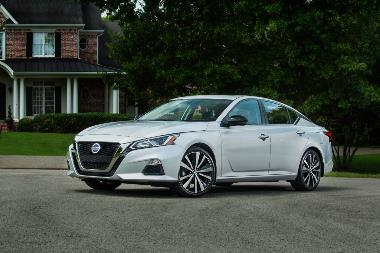
2019 Nissan Altima: Bringing Energy in an all-new Design and a Turbo Engine
Tuesday, Dec 10, 2019
Currently the 6th best-selling sedan in America, Nissan’s Altima entered its 26th year with a redesign that Nissan execs say will “re-energize the sed …Currently the 6th best-selling sedan in America, Nissan’s Altima entered its 26th year with a redesign that Nissan execs say will “re-energize the sedan segment – in terms of design, driving feel and in making advanced technologies available and affordable for everyone."Show More
Launched in 1993 as a compact, Altima evolved into a mid-size that steadily gained in stature in handling, fuel economy and style. That translated into solid sales of more than 5.6 million vehicles, and a following that Nissan hopes to excite with 2019’s alterations. Altima completed its last full redesign in 2013, and the all-new Altima brings expressive styling, an uplifting interior, two new powerplants -- including the company’s world-first variable compression turbo engine. Among new features are Nissan’s first available Intelligent All-Wheel Drive in a U.S. sedan, and advanced Nissan Intelligent Mobility system, including ProPILOT Assist and Rear Automatic Braking, which helps the driver detect stationary objects when backing up, and if necessary, applies the brakes to help avoid a collision.
Additionally, the 2019 Altima is available with all-wheel drive for the first time, and even base trims now come standard with Apple CarPlay, Android Auto, and Bluetooth support for its 8-inch infotainment system. The driver gets an eight-way power adjustable seat.
The new design is lower, longer and wider, with the hood and cowl pushed downward for a more athletic stance. Adding larger available 19-inch wheels and tires helps deliver a more linear, tailored feel that is emphasized by the sharp horizontal lines and signature Nissan design cues such as the V-motion grille and streamlined boomerang lights. Available exterior elements include the grille with dark chrome finish, LED projector headlights with signature Daytime Running Lights, LED fog lights, floating roof with slim pillars and single panel moonroof.
Compared with the previous generation, the new Altima is 1.1 inches lower in height, at 56.9 inches; 1.0 inches longer, at 192.9 inches; and 0.9 inches wider, at 72.9 inches – while also featuring a smaller front overhang thanks a 1.9-inch longer wheelbase (111.2 inches) and rear wheels pushed farther to the corners. The result is a dramatically sleeker yet more sophisticated look. The coefficient of drag is just 0.26, and my test Altima weighed in with a curb weight of 3462 lbs., a pound less than my text Altima last year.
From a power perspective, Nissan updates its 2.5-liter inline four-cylinder to produce 188 horsepower and 180 lb-ft of torque, up 9 hp and 3 lb-ft from the previous generation. The 2.5 is EPA rated at 27mph/city, 37mpg/highway and 31mpg/overall for FWD and 25/35/29 for AWD. Replacing the previous-generation Altima's 3.5-liter V6 engine is the world's first production-ready variable compression turbo inline 4-cylinder – which generates the performance of some V6 gasoline engines but with 4-cylinder level fuel economy. The 2.0-liter turbo is an inline 4-cylinder plant that delivers 248hp and 280 lb-ft off torque and is EPA rated at 25/34/29, and my test turbo averaged 30.2 mpg in mixed-use driving and some long interstate runs.
Last year, my 3.5-liter-powered Altima accelerated well in all ranges, and a track run from zero-to-60mph was completed in an energetic 6.1 seconds during a 14.6-second quarter-mile. This year, my turbo-powered ride was nearly identical at 6.0 and 14.6 (hand-timed).
Steering showed some understeer that was fun on the autocross, and the independent strut front suspension with coil springs and stabilizer bar and a multi-link independent rear suspension with stabilizer bar were smooth on the road.
Altima’s cabin is refined, luxurious, tech-filled, quiet and comfortable, but it has lost some size comfort, with 39.2 inches of front headroom (down 0.8 inches) and 38.0 inches ion row two (down 0.9). Front legroom is 1.2 inches tighter at 43.8 inches, and a snug 35.2 inches in the second row (down 1.1 inches); with surprisingly wider shoulder room of 58.2 in front (up 1.8 inches) and 57.1 inches in row two (wider by 0.7 inches).
Altima’s range of safety and convenience features includes standard Automatic Emergency Braking, Intelligent Forward Collision Warning and Intelligent Driver Alertness on all grades. Intelligent Around View Monitor is standard on the Altima Platinum. The addition of Rear Automatic Braking creates Safety Shield 360, which provides front, side and rear safety monitoring and intervention technologies, under the umbrella of the Nissan Intelligent Mobility strategy.
The base 2019 Nissan Altima 2.5 S starts at $24,000 and 10 variations run up to $33,380 for the 2.5 Platinum. The more powerful Altima SR VC-Turbo bases at $29,400 and moves up to $35,750 for the Edition ONE VC-Turbo. I tested that one with a rear spoiler, 19-inch dark gray aluminum alloy wheels, external ground lighting, Nissan Concierge™ Service and Edition ONE floormats. Pearl White exterior paint added $395 and was matched to a Charcoal leather interior. This version comes loaded, so there were no packages available, but accessory add-ons included four splash guards for $205, Chrome body-side moldings for $265, Chrome rear bumper protector for $165, Interior accent lighting for $455, and a safety impact sensor for $210. Destination and handling added $895 for an MSRP as tested of $37,720, but late-season incentives may be available from your local dealer.
> Visit www.CarlisleEvents.com for more on the automotive hobby.
Mike Blake, former editor of KIT CAR magazine, joined Carlisle Events as senior automotive journalist in 2004. He's been a "car guy" since the 1960s and has been writing professionally for about 30 years. </I>
-
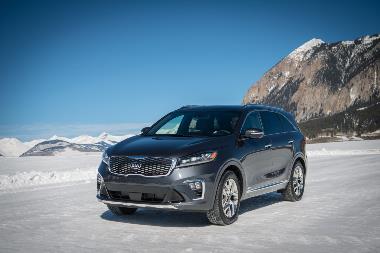
2019 Kia Sorento: Sophisticated, rugged and tech-savvy CUV
Tuesday, Dec 3, 2019
The Kia Sorento is a mid-sized, five-door CUV that is into the fourth year of its third generation and is available as either a 5-seater or 7- …
Show MoreThe Kia Sorento is a mid-sized, five-door CUV that is into the fourth year of its third generation and is available as either a 5-seater or 7-seater, depending on configuration.
Following a 2018 mid-year facelift that saw revised front grille, headlamps, taillamps and signals that continue the design cues shown on its sister Kia Forte and Kia Cadenza models, the 2019 version tweaks-up with new front and rear fascias and new cabin technology, including available Driver Attention Warning
Available in eight trim levels, the 2019 Sorento modifies its power, exterior and interior for the model year. One power-mod is the eliminating of its formerly optional 2.0-liter 4-cylinder turbo (240 horsepower, 260 lb-ft of torque), which was discontinued due to low consumer demand. That leaves Sorento with two power choices: the base 2.4-liter 4-cylinder engine and the 3.3-liter V6.
Outside, the 2019 Kia Sorento features the new front and rear, plus updated headlight and taillight designs. Top trims use full LED headlights, and most trims use LED rear lighting. Sorento's distinctive “ice cube” fog lights are updated with LEDs on the SX Limited trim.
Inside, you now get a four-spoke steering wheel, a new shifter head, new instrument cluster graphics, new colors and connectivity improvements. For 2019, every Sorento comes with a touchscreen -- 7 inches as standard, with an optional 8-in unit that includes integrated navigation. Wireless charging is a new feature that has been added to top trims, and, new for 2019, the Kia Sorento comes standard with three rows and 7-passenger seating. The 2018 came standard with only two rows, with a third being optional on the LX trim level and standard on all those with the V6 engine.
Safety upgrades for 2019 include lane-keep assist and a driver inattention and fatigue monitor added to the top trims.
All Sorento trim levels are loaded, and my test vehicle, the top-of-the-line SX Limited (often called the SXL) added to the basics with such style and substance items as a Black Metallic Nappa Leather interior, Panoramic sunroof with power sunshade, Chrome 19-inch Alloy Wheels with Michelin Tires, LED Front Fog Lights, LED Headlights, Low Beam Assist, Chrome Lower Door Molding, Power-Folding Outside Mirrors, Automatic Rain Sensing Windshield Wipers, Smart Power Liftgate, High Beam Assist, Reverse Tilt-Down Outside Mirrors, Heated 2nd-Row Seats, Stainless-Steel Pedals, Surround View Monitor, Blind spot collision warning, Forward Collision Avoidance and Surround View Monitor.
The 5-door Sorento is considered a large, “mid-size” SUV with Steel Unibody (Iso-Structure) Construction, weighing in anywhere from 3968 pounds to 4350 pounds, depending on trim and configuration. Displaying a muscular, rugged and confident stance, with a raked windshield, rounded angles, and a long hood to deliver a more aerodynamic and sleek appearance, Sorento’s dimensions are189.0 inches in length, 74.4 inches in width and 66.5 inches in height on a 109.4-inch wheelbase.
Offered in both FWD and AWD configurations, Sorento provides two engine choices: a 2.4-liter inline-4 GDI, and a 3.3-liter V-6 GDI that powered up my test Sorento SXL. The 2.4-liter engine delivers 185 horsepower and 178 lb-ft of torque; and the 3.3 V-6 gallops out 290 horses and 252 lbs-ft. of torque and can tow up to 5,000 lbs when equipped with AWD. My test Sorento SXL with the 3.3-liter was EPA rated at 19/city, 24/highway and 21/overall in AWD, and my tests showed 27mpg on the interstate and an average of 22.2 overall in mixed-use driving.
Sorento’s engine response was slower than expected, but steady, and passing power is reliable. On the track, my ride finished off a zero-to-60mph sprint in 7.7 seconds, and covered a quarter-mile in 15.8.
The ride is quiet and road roughness is evened out nimbly. Sorento is smooth on the highway thanks to an independent front suspension with MacPherson struts, coil springs, stabilizer bar, dual flow dampers shocks that work well with the independent, multi-link rear with stabilizer bar and DFD shocks. The Rack-Mounted-Motor Driven Power Steering reacts appropriately in quick maneuvering with only slight understeer, and top-wobble has been lessened due to the long, wide stance and short height. Lesser trim levels get Column-Mounted Motor Driven Power Steering.
The well-appointed cabin room measures legroom of 44.1 inches in front, 39.4 inches in the middle and a child-roomy 31.7 inches in the rear. Headroom is tight in all sections: 39.5 inches up front, 39.3 in the middle and 36.3 in the rear. Shoulder room is comfortable at 59.1, 58.0, and 52.8 for children in the rear. Cargo room volume behind the first row is 73.0 cu.ft.; behind row two is 38.8 cu.ft., and you still get 11.3 behind the third row.
The 2019 Kia Sorento offers eight trims. The base L trim has a starting price of $26,290 for the 2.4-liter manual in FWD. The first trim with the 3.3-liter V-6 is the Sorento S V6 that starts at $31,290 (FWD), and I tested the top-level SX Limited trim, basing at $46,490. In all-wheel-drive (normally an extra $1800 for lesser trim levels), we added remote start for $425, Mud Guards for $95 and Side step bars for $495. Destination charges of $1045 were added for a price-as-tested of $48,945.
> Visit www.CarlisleEvents.com for more on the automotive hobby.
Mike Blake, former editor of KIT CAR magazine, joined Carlisle Events as senior automotive journalist in 2004. He's been a "car guy" since the 1960s and has been writing professionally for about 30 years. </I>
-
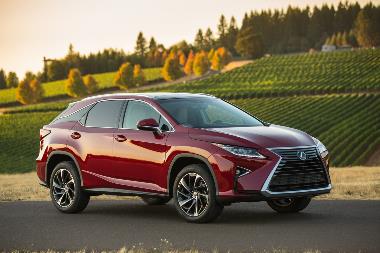
2019 Lexus RX350: Luxury SUV continues to perform, adds cosmetics and Alexa
Tuesday, Nov 26, 2019
Since its launch in 1998, the Lexus RX has offered a combination of SUV versatility and luxury sedan-like comfort, earning it status as America’s best …Since its launch in 1998, the Lexus RX has offered a combination of SUV versatility and luxury sedan-like comfort, earning it status as America’s best-selling luxury SUV. Refining itself with a dramatic mix of sharp creases and curves, the focal point of the front is the Lexus signature spindle grille, set off by an elegant chrome-plated surround and standard Bi-LED headlights.Show More
Three years after the introduction of its fourth-generation, RX sees several changes for 2019. These upgrades include a two-tone instrument panel on the RX 350 Premium and RX 450h (hybrid) Premium with a Noble Brown interior; Lexus Enform Remote (smart watch and Amazon Alexa skill integration) is now offered; and Intuitive Parking Assist is no longer a stand-alone option.
For 2019, the available L-shaped premium LED headlights use three unique L-shaped elements per side. The spindle theme repeats at the rear, where L-shaped LED taillights envelop the tailgate and wrap into the rear fenders. Capping off the design is a floating-roof effect created by elegantly blacked-out C-pillars. Where the rubber meets the road, there’s a choice of three 20-inch wheel designs. Also, all RX paint colors feature a scratch-resistant self-restoring coat, using high-performance macromolecular polymer.
The elegantly sculpted 4387-lb. (for the AWD) RX 350 is constructed of unitized steel, and measures 192.5 inches long, 74.6 inches wide and 67.7 inches high on a 109.8-inch wheelbase. Ground clearance is 8.2 inches and maximum towing capacity is 3500 lbs.
The RX 350 shows off its power with a 3.5-liter V-6 aluminum block engine, coupled with an 8-speed Automatic Electronically Controlled Transmission. The system is rated at 295 hp and 267 lbs.-ft. of torque, and the transmission, with “intelligence”, accelerates in car-like fashion. Behind the wheel and in the seats, RX350 seems faster than its stopwatch times. Accelerating from a stop is effortless, and passing at speed and conquering uphill grades are equally easy and predictable. At the track, my test RX350 finished off a zero-to-60mph run in 7.8 seconds during a 16.1-second quarter-mile. EPA rated at 19mpg/city, 26mpg/highway and 22mpg/overall for the AWD configuration, my test RX350 averaged 22.7mpg in mixed-use tests.
The RX 350’s electric power rack and pinion steering with electronic power assist was often vague, and understeer was apparent, but acceptable. Inside, for driver and passengers, the experience was as smooth as one would expect in a luxury vehicle. The all-wheel-drive set-up worked as expected and the MacPherson strut front suspension with coil springs and the rear double wishbone, smoothed out most road irregularities.
The cabin is generously packed with intuitive, luxurious and high-tech conveniences. With seating for 5, interior dimensions are comfortable at 39.4 inches up front and 39.1 in the rear; legroom is 44.1 inches in row one and 38.0 inches in row two; and shoulder room is 57.8 and 57.6. The interior cabin is a treasure chest of amenities including automatic dual-zone climate control; dust and pollen particle and deodorizing interior air filter; dual sliding sun visors; electrochromic rearview mirror with compass; power door locks with anti-lock out feature; power tilt-and-telescopic steering column; power windows with one-touch auto up/down feature; steering wheel audio controls; Lexus Display Audio with an 8-inch screen and nine speakers; backup monitor and Bluetooth® hands-free phone and automatic phonebook download capabilities.
Safety items are also plentiful and include side impact door beams, a supplemental restraint system consisting of dual-stage and dual-chamber driver’s and front passenger’s airbag, driver and front passenger knee airbags, front side airbags, rear side curtain airbags and front and rear seat-mounted airbags; a tire pressure monitor system with available tire inflation display function; active front headrests; vehicle theft-deterrent and engine immobilizer system.
The base 2019 Lexus RX 350 starts at $43,820 in front-wheel drive and $45,220 in all-wheel drive. The seven-passenger 350L is priced at $48,020 for FWD and $49,420 for AWD; the dynamic sport-tuned RX 350F Sport starts at $49,470 (FWD) and $50,870 (AWD). If you go up to the 450h (gas-electric Hybrid), pricing starts at $46,245 in AWD, the 450hL in AWD is $50,970 and the RX 450h F Sport bases at $51,605.
My all-wheel-drive test RX 350 AWD in Matador Red Mica with a Black NuLuxe Leather with Striated Black trim interior added the Premium Package, for $1110, with Espresso Walnut and leather interior trim, a rear armrest storage compartment, rain-sensing wipers, leather interior trim, electrochromic power folding outside mirrors, and the Lexus Memory System; and a power moonroof with roof rails was added for $1350. Heated front seats cost $440; and the $3225 Navigation/Mark Levinson® Package was added with a 15-speaker Mark Levinson Premium Surround Sound Audio System, Navigation System, 12.3-inch color multimedia display, in-dash DVD/CD player, Lexus Enform App Suite, remote touch and climate control smog sensor. The Cold Weather Package added a Windshield Wiper De-Icer, Fast-Response Interior Heater and Auto-Leveling Headlamps for $315. A Touch-Free power rear door added $200; mud guards were $155; door edge guards were $140; running boards were $639; and a panoramic blind-spot monitor with rear-cross-traffic and braking was added for $1385. With the delivery and processing fee of $1025, my test 2019 all-wheel-drive Lexus RX350 stickered at $53,654.
> Visit www.CarlisleEvents.com for more on the automotive hobby.
Mike Blake, former editor of KIT CAR magazine, joined Carlisle Events as senior automotive journalist in 2004. He's been a "car guy" since the 1960s and has been writing professionally for about 30 years. </I>
-
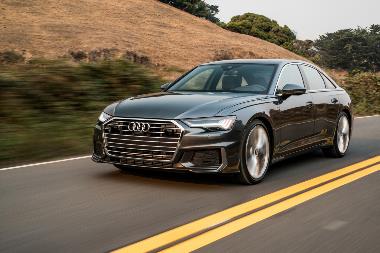
2019 Audi A6 3.0T: Revised mid-size luxury sedan gains in looks, performance and tech
Tuesday, Nov 19, 2019
The 2019 Audi A6 is all-new for 2019, with changes in its architecture, engine and power; standard all-wheel-drive and the addition of innovative tech …The 2019 Audi A6 is all-new for 2019, with changes in its architecture, engine and power; standard all-wheel-drive and the addition of innovative technologies, touch-sensitive controls, infotainment and digital solutions.Show More
Audi’s executive luxury mid-size sedan, the A6, is the No.4-selling mid-size luxury vehicle in America, and has built on its reputation for showcasing liquid style, elegant lines, power, pampering and performance that epitomized its earlier versions.
Beginning as the successor to the Audi 100 in 1994, the A6 was ostensibly a cloned Audi 5000. Filling the mid-size portion of Audi’s executive line, complimenting the full-size A8, the A6 is now in its fifth generation, and is available as a wagon and a sedan, though the wagon is marketed as the Avant.
Manufactured in Neckarsulm, Baden Wuertemberg, Germany, the 2019 Audi A6 is rounded and sculpted at the same time, showing off muscular, yet elegant contours. New design cues include front-end focus starting with a new, wider grille, sharply drawn headlights moved closer to the face; character lines in the hood and an intricate lower fascia. Thin shoulders, tapered roofline, gently bowed sides and pronounced wheel arches bring you to the re-sculpted rear that is paid off with a short trunk lid that ends in a curved edge for optimized aerodynamics.
A6’s galvanized steel body utilizes an aluminum hood and front fenders to save weight, and comes in at a curb weight of 4266 lbs. With a multi-step anti-corrosion protection system employed within the construction, A6 delivers extra luxury touches from the frame up. Slightly larger in nearly all dimensions from the previous model, A6 measures 194.4 inches long, 74.3 inches wide and 57.4 inches high on a 115.1-inch wheelbase with 4.6 inches of ground clearance.
Powerwise, the A6 features a newly developed 3.0-liter TFSI® V6 engine, which delivers more power than its predecessor and weighs 30 pounds less. The 3.0-liter engine generates 335 horsepower and 369 lb-ft of torque, 44 lb-ft of peak torque more than the previous generation. The V6 engine features a twin-scroll turbocharger positioned directly inside the “V” replacing the supercharger from the previous generation.
Graceful in looks and in performance and handling, my Audi A6 broke 5 seconds in the sprint at 4.9 for a zero-to-60 run, and completed a 13.5-second quarter-mile. EPA estimates are 22/city, 29/highway and 25mph as an average for the 3.0T and my test A6 averaged 21.6 mpg in mixed-use driving.
A6 is a driver’s car with responsive Electromechanical speed sensitive power steering, optional dynamic all-wheel steering and exceptional balance. Its modular longitudinal platform aids stability and in extreme hairpins and softer twisties, and the previous generation’s understeer has been diminished significantly.
A6 accelerates deftly with supercharged low-torque power and has good high-range ability as well. The five-link front suspension with an anti roll bar, twin-tube-gas-filled shock absorbers and trapezoidal-link rear with twin-tube-gas-filled shock absorbers is a bit loose, but confidently smoothes road irregularities. Braking is self-assured with the electronic stability program, anti-lock brakes and electronic rear brake pressure proportioning.
The cockpit is indulgent with exquisite fit and finish, a bevy of advanced communication technologies, ambient lighting, keyless start, ergonomic seats with power lumbar up front, leather seating surfaces (partial leather), three zone automatic air conditioning and metallic accents, including chrome bezels framing air vents.
The cabin is also pampering with seating for five – 38.0 inches of front headroom with sunroof, 38.1 inches in the second row; 41.3 inches of legroom in row one and 37.4 in row two; and shoulder room of 57.8 and 56.5.
From a safety perspective, 2019 Audi A6 named 2019 Top Safety Pick+, the highest rating available from IIHS – when equipped with available LED Matrix Design headlights with high beam assist on Premium Plus and Prestige trim lines
A6 safety items include a front-end crumple zone carefully constructed to absorb energy from frontal impact and the engine and front axle divert energy to a fortified floor and tunnel structure. Also included are an adaptive restraint system, side and curtain airbags, Audi pre sense that initiates protective measures if it detects an imminent collision, adaptive cruise control with stop and go function, and systems that warn the presence of other vehicles and activate if a rear-end impact appears imminent.
The 2019 Audi A6 3.0T in Premium trim starts at $58,900, the Premium Plus trim bases at $62,700 and the Prestige trim starts at $67,100. Some exterior paints add $595 to the sticker, but m y test vehicle came in a standard Brilliant Black with Black leather seating surfaces at no extra charge. The Convenience Package added $1300 for Audi Side Assist with Pre Sense Rear, rear cross traffic assist and vehicle exit warning, Heated Auto-Dimming Power-Folding Exterior Mirrors Body color with memory, Audi Phone Box with Wireless Charging, signal booster and Audi Advanced Key. The Cold Weather Package added $600 for a Heated Steering Wheel and Heated Rear Seats. A CD/DVD player added $150 and Rear Side Airbags (which should have been standard and not an option – NEVER option your safety) added $350. Audi Guard All-Weather Floor Mats with an A6 Logo added $200 and Destination charges of $995 put the sticker-as-tested at $62,495.
Mike Blake, former editor of KIT CAR magazine, joined Carlisle Events as senior automotive journalist in 2004. He's been a "car guy" since the 1960s and has been writing professionally for about 30 years. -
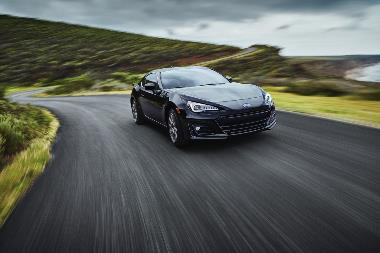
2019 Subaru BRZ: Coupe is a Kick at the Track and First-Class in Town
Tuesday, Nov 12, 2019
Subaru’s version of the sports coupe, is the BRZ, launched in 2013 and co-developed with Toyota as part of its “86” series of grand tourer sports c …
Show MoreSubaru’s version of the sports coupe, is the BRZ, launched in 2013 and co-developed with Toyota as part of its “86” series of grand tourer sports coupes. BRZ features a boxer engine, front-engine, rear-wheel-drive layout and 2+2 seating, but its platform is its own, and unshared with other models. The Boxer engine, a Subaru staple, is behind the nomenclature, as BRZ stands for “Boxer Rear-drive Zenith”.
Remaining in its first generation, the 2019 BRZ adds only a Series.Gray trim model, based on BRZ Limited, featuring black-finish alloy wheels and Performance Package with Brembo® brakes, SACHS® performance shock absorbers, and exclusive exterior and interior trim. Cosmetically, and for better road steadiness, a wheel opening arch fin was added to enhance aerodynamic stability on all models.
I have driven BRZs before and few changes is good strategy … while power may be bit lacking – at 205 hp an 156 lbs-ft of torque, BRZ is a fun drive that is a kick on the autocross, a beast in quick turns and a bit of a strategy animal on the highway in uphill grades and passing at speed. And BRZ’s around town manners and maneuverability are first-class.
BRZ utilizes a large proportion of high-tensile steel, with aluminum for the hood, to present a light and well-balanced chassis, weighing in with a curbweight of only 2798 lbs. for the manual edition of the Limited trim, and 2840 for an automatic. Its handling attributes can partially be traced to its low center of gravity at just 18.1 inches -- among the lowest of any production car in the world.
The sleek and raked coupe body includes a low roof height of just 50.6 inches, combined with a swept-back roofline, bulging front fenders, short overhangs and pronounced rear haunches for a lean, athletic stance that emulates that of a classic GT coupe. BRZ sits 166.7 inches long, and 69.9 inches wide on a 101.2-inch wheelbase and its exterior is enhanced by hawk eye high intensity discharge headlights, hexagonal lower grille and six-star ornament in Subaru signature styling.
The BRZ interior is simple, elegant, sports coupelike and loaded with tech, featuring an easy-to-see instrument panel, center-mounted tachometer with an analog speedometer to its left, fuel and temperature gauges positioned to the right, and a cornucopia of infotainment.
Cabin accommodations are also coupelike and decidedly cramped with 37.1 inches of front headroom and 35.0 inches for rear-seat passengers, a comfortable 41.9 inches of front legroom, but only a child-worthy 29.9 inches in row two, and 53.1 inches of front shoulder room, with a tight 45.3 inches in the backseats.
Under hood, Subaru’s 2.0-liter Boxer engine in manual configuration is EPA estimated at 21/29/24 while the automatic comes in higher at 24/33/27, and my week of mixed-use testing in the manual came in at an average of 25.0mpg.
While BRZ looks, handles and sounds like a throaty sports coupe, it doesn’t accelerate like one. Thanks to a low-body weight, the modest horsepower and torque outputs are fine for long-distance cruising and some autocross fun, but BRZ is NOT a speed-track performer. Acceleration seems tedious, though I was able to finish a zero-to-60mph sprint I accomplished in 6.6 seconds, en route to a 15.1-second quarter-mile.
BRZ’s rack-and-pinion steering with electric power assist is communicative and predictive, and performs well in quick Esses, winding curves and tight parking situations. The 4-wheel independent front suspension with MacPherson-type struts, lower L-arms, coil springs, stabilizer bar, strut tower brace and anti-dive geometry, combined with a double-wishbone type rear with coil springs, stabilizer bar and anti-lift geometry smooth out road irregularities while offering good road feel to the driver.
Regarding safety, the Insurance Institute of Highway Safety (IIHS) awarded the 2019 Subaru BRZ “Top Safety Pick” honors based on crashworthiness evaluations of front moderate overlap, side impact, roof crush and rear impact. Subaru’s Ring-Shaped Reinforcement Frame safety structure forms the foundation for crash protection and occupant safety and the compact Subaru Boxer engine helps enhance safety, because it allows more crush room in front and on the sides.
Additionally, Subaru’s Advanced Frontal Airbag System employs dual-stage-deployment driver and front passenger air bags. And front seat side pelvis/torso air bags and side curtain air bags offer additional head protection for front and rear occupants.
The 2019 Subaru BRZ starts at $25,795 in Premium trim, with voice-activated GPS navigation system and Bluetooth® hands-free connectivity. The Limited trim starts at $28,645 and gets you Alcantara® and leather-trimmed upholstery, heated front seats, Keyless access with push-button start, heated side mirrors, LED fog lights, dual-zone automatic climate control, Sport-design gauges with 4.2-inch multi-function display, and more.My Limited BRZ with a manual transmission, much more fun than the automatic 6-speed for $1100 more, came with a Crystal Black Silica exterior matched to a Black Leather/ Alcantara® cabin. The only package offered, a cool aluminum-alloy wheel and Brenbo performance braking system would have added $1195, but were not on my build. Accessories including a 10-inch powered subwoofer, exterior cosmetics and interior illumination are available. My test ride only added an auto-dimming mirror with compass and Homelink® for $377. Destination and delivery charges of $885 put the final sticker-as-tested at $29,907.
> Visit www.CarlisleEvents.com for more on the automotive hobby.
Mike Blake, former editor of KIT CAR magazine, joined Carlisle Events as senior automotive journalist in 2004. He's been a "car guy" since the 1960s and has been writing professionally for about 30 years. </I>
-
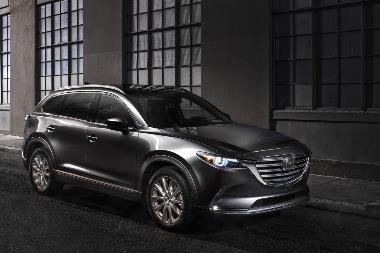
2019 Mazda CX-9: Elegance and High-Tech Equipment Updates Continue
Tuesday, Nov 5, 2019
Marketed by Mazda as “Always Elegant. Never Ordinary,” Mazda’s CX-9 has been an attractive, elegant three-row crossover since it debuted in 2006 …Marketed by Mazda as “Always Elegant. Never Ordinary,” Mazda’s CX-9 has been an attractive, elegant three-row crossover since it debuted in 2006. Sculpted, rounded and carved, the midsize SUV has always stood out from its many boxy competitors. With each successive model year, the Mazda CX-9, now in the fourth year of its second generation, has benefited from refinements, technology updates and performance improvements, and that tradition continues for 2019.Show More
New Equipment for 2019 includes: a retuned suspension for a smoother ride; new Apple CarPlay™ and Android Auto™ infotainment technologies; SiriusXM® 3-Year Traffic and Travel Link Subscription with information for Traffic, Weather, Sports Scores, Fuel Prices and Parking; a new reconfigurable 7.0-inch TFT gauge display, new 360-degree View Monitor and surround-view parking camera system, ventilated front seats, frameless rearview mirror, power-folding door mirrors, updated Santos Rosewood interior trim, new Signature trim level badge, and new uplevel packages.
CX-9 has earned accolades from media leaders as a “10 Best” winner in truck and SUV competition; A Top-Safety Vehicle; a Tops in Design Crossover; “North American Utility of the Year” finalist; “World Car of the Year and World Car Design of the Year” finalist; “10 Best Interiors” and “10 Best Engines” awards recipient. CX-9 also won Strategic Vision’s “Total Quality Impact” award, and for 2019, Mazda CX-9, continues to impress in safety, earning the Insurance Institute for Highway Safety’s highest recognition of “Top Safety Pick+” when equipped with Smart Brake Support and Adaptive Front-lighting System.
CX-9 also proudly embodies Mazda’s “Soul of Motion” design concept through its proportion -- a long hood, swept greenhouse, large wheels and short overhangs that convey stability and a contained sense of potential energy. A true midsize three-row crossover, CX-9 measures 199.4 inches long, 77.2 inches wide and 67.6 inches high, with a 40.5-inch front overhang and 115.3-inch wheelbase. Ground clearance is 8.8 inches and curb-to-curb turning circle radius is 19.4 feet. My test CX-9 Signature was in AWD configuration and came in with a curbweight of 4308 pounds.
My Signature trim also added a Signature Badge, LED grill and overhead accent lighting, 20-inch aluminum-alloy wheels, automatic power folding side mirrors and power sliding-glass moonroof with sunshade.
CX-9’s powertrain is the same as last year, with a 2.5-liter inline-4 turbo engine that delivers 227hp on regular (87-octane) unleaded fuel and 250hp with Premium (93-octane) gas. Torque is 310 lbs.-ft., and the EPA estimate is 20mpg/city, 26mpg/highway in AWD configuration (FWD is rated at 22/28). A week of mixed-use driving averaged 23.7mpg.
CX-9 delivers on the highway, with a driver’s feel and a pampering and alert ride. Road feel is good at speed and macadam ruts are smoothed out by its MacPherson strut independent front suspension with stabilizer bar and an independent multi-link rear with stabilizer bar. The power-assisted rack-and-pinion steering with engine-speed-sensing variable assist was attentive and accurate both at high speed and during autocross maneuvers, though some acceptable understeer took place during hairpins and S-Curves. Acceleration was dependable and solid in all ranges. My test CX-9 showed strong speed increase when asked and both passing at speed and overcoming long uphill grades were predictable and uncompromising. In track tests, my CX-9 finished off a zero-to-60mph sprint in 7.6 seconds during a steady 16-flat quarter-mile run.
The CX-9 cabin is elegant, intuitive, loaded and comfortable, but accommodations can be confining for drivers and passengers over 6-feet tall. Front headroom is 39.3 inches up front without a moonroof, 38.5 in row two and a child-friendly 35.4 inches in row three. Legroom is comfortable at 41.0 in front with 39.4 in row two and a confined 29.7 in row three, while shoulder room measures 57.9, 58.1 and 53.1.
The interior is saturated with high-tech and comfort amenities, infotainment, safety and navigational (option) amenities, a 7-inch LCD multi-information display, Bose® Centerpoint® Surround Sound System with AudioPilot® and 12 speakers, and my test Signature added Auburn Nappa leather seating and trim, heated second-row seats, genuine Santos Rosewood inlays and leather-wrapped steering wheel with unique stitching.
Safety is attended to well and includes such items as advanced dual front airbags, front side-impact airbags, side air curtains (front, rear and third row) with roll-over protection, Blind Spot Monitoring System, Rear Cross Traffic Alert, tire pressure monitoring system and more.
Available in four trim levels, FWD and AWD, the 2019 Mazda CX-9 starts at 33,325 for a front-wheel drive in the Sport trim – AWD starts at $34,080. Touring trim starts at $35,330 in FWD and 37,130 for AWD; the Grand Touring trim starts at $40,840 (FWD) and $42,640 (AWD) and the top-of-the-model-line Signature starts at $45,365 available only in AWD.
My test ride, a CX-9 Signature in Jet Black Mica Mica (a standard color), with Black Cloth interior, added a Power Driver’s Seat and I-Activsense Package for $1290 (power lumbar, heated front seats and side mirrors, Lane Keep Assist, Lane Departure Warning, Rain-sensing wipers, Smart Brake Support, and more); Rear Parking Sensors for $500; Frameless Auto-Dimming Mirror with Homelink for $325; LED Fog Light for $450; Navigation System for $400; and Front and rear Splash Guards for $100. With Destination charges of $1045, my 2019 Mazda CX-9 Signature as tested, stickered at $38,190.
<I> Visit www.CarlisleEvents.com for more on the automotive hobby.
Mike Blake, former editor of KIT CAR magazine, joined Carlisle Events as senior automotive journalist in 2004. He's been a "car guy" since the 1960s and has been writing professionally for about 30 years. </I>
-
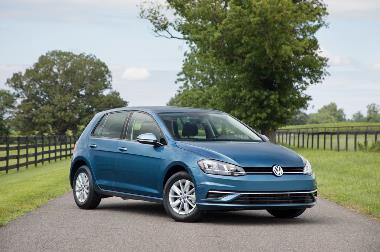
2019 Volkswagen Golf 1.4T: Less Power Means Better Fuel Economy and no Loss in Performance
Tuesday, Oct 29, 2019
The No.1-selling car in Europe for the past 44 consecutive years is the Volkswagen Golf. Though not currently cracking America’s top 100 -- Golf st …
Show MoreThe No.1-selling car in Europe for the past 44 consecutive years is the Volkswagen Golf. Though not currently cracking America’s top 100 -- Golf struggles, as do many compact hatchbacks -- that doesn’t change the excitement generated by Golf’s abilities and price – basing in the low $20Ks
The seventh-generation Golf originally replaced the “Beetle” and was introduced to America in 1975 as the “Rabbit.” Volkswagen has never made an official explanation as to why the “Golf’ designation was not available to the United States until the 2010 model year, but from the beginning, the vehicle was one of the first small hatchbacks to break the bonds of the econobox perception, delivering an upscale hatch for economy prices.
Following a slight design tweak in 2018 – straightening out some rounded architecture, adding some detail and upscaling the interior – the 2019 Golf changes engines and adds transmission options and driver-assistance items. Available in two trims --S and SE -- Front Assist, Blind Spot Monitor, and Rear Traffic Alert are now standard on both trim levels, and a Driver-Assistance Package has been added as an option for the SE trim; all 2019 Golf models feature Volkswagen’s innovative MIB II touchscreen infotainment system; and the big news is a powertrain change.
For 2019, Golf believes less is more … less power is more fuel-effective, as Golf replaces its 1.8-liter TSI® engine -- 170hp and 199 lbs.-ft. of torque – with a 1.4-liter turbo rated at 147hp and 184 lbs.-ft. for a fuel-economy increase of 4 mpg/city and 1 mpg/highway – 29/city and 37/highway. The new powertrain is the same system employed by the 2019 Jetta, and it is paired with either six-speed manual or an eight-speed automatic transmission.
Golf’s unitary construction, bolt-on front fenders and two solid mounted subframes form the exterior. Its front bumper and chrome-surround grille flanked on either side by carved LED daytime running lights provide the Golf a light signature, and at the rear, full standard LED taillights complete the display without distracting from the strong C-pillar and non-boxy lines. With a curb weight of 2873 lbs. for manual transmission (2945 lbs. for an automatic), the compact hatchback measures167.6 inches long, 58.2 inches high and 70.8 inches wide on wheelbase of 103.8 inches.
Golf power comes from a front-mounted engine and a front-wheel-drive set-up. Its new 1.4-liter four-cylinder turbocharged and direct-injection TSI engine was mated to a six-speed manual gearbox in my test ride, and the system is enhanced by an air-to-water heat exchanger built directly into the intake module in place of an intercooler. The exhaust manifold is integrated into the head, reducing the distance that exhaust gases must travel to reach the turbocharger, resulting in faster response and improved low-rpm performance, as well as increased torque throughout the rev range. Even with the power loss, acceleration was equal to the larger engine’s results, as I found the previous turbo hesitant with more turbo lag, and my zero-to-60mph test sprint was accomplished in 60 mph in 7.7 seconds during a 16.0-second quarter-mile. That actually beat my last test runs in earlier-model Golfs, by 0.3 seconds. The power loss was felt in passing at speed, as in those ranges, while there is less lag, there is also a slower power build-up, resulting in longer passing times – close, but a bit longer. And my week with the 1.4-T manual saw an average of 30.9mpg.
Inside, Golf seems a bit snug, but is actually roomy for the niche, and it is filled with electronics. Interior headroom comes in at only 38.4 inches in front and 38.1 inches in row two; legroom is comfortable in row one at 41.2 inches and a cramped 35.6 for the second seats; and shoulder room is 55.9 and 53.9.
The standard 3-spoke leather-wrapped steering wheel emphasizes the driver-centric nature of the Golf cabin, and backlighting for the controls provides an upscale ambience. Both Golf trims feature a raft of comfort and convenience features often found on more expensive vehicles, including up-niche cosmetics, Climatic® air conditioning, cruise control, rearview camera, partial leather-wrapped handbrake and shifter knob, and partial power front seats.
Safety items include a combination of both passive and active safety systems; front and rear disc brakes; hill-hold assist; six airbags; and a number of electronic safety systems, such as an Anti-lock Braking System, Electronic Stability Control and Volkswagen’s Automatic Post-Collision Braking System.
The 2019 Golf 1.4T is available in two trims – the S and SE.—with the base S starting at $21,845. My test SE started at $24,145, and added an 8-inch touchscreen (upgrading the base 6.5-incher on the S), a panoramic sunroof and keyless access with push-button start to the base model. In Silk Blue Metallic exterior paint, my test ride was matched to a Titan Black V-Tex Leatherette interior and came with the 6-speed manual transmission – an automatic trans would have been an $1100 upgrade. The Driver Assistance Package added High Beam Control (Light Assist), Lane Keeping System (Lane Assist), Auto-dimming interior rearview mirror, Adaptive Cruise Control and 17-inch alloy wheels for $1295. With Destination Charges of $895, my 2019 Golf SE stickered at $26,335.
> Visit www.CarlisleEvents.com for more on the automotive hobby.
Mike Blake, former editor of KIT CAR magazine, joined Carlisle Events as senior automotive journalist in 2004. He's been a "car guy" since the 1960s and has been writing professionally for about 30 years. </I>
-
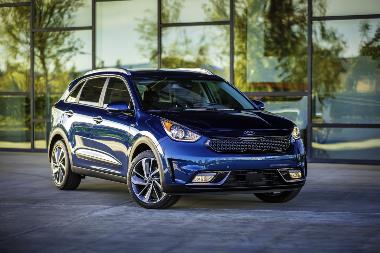
2019 Kia Niro: Sporty and Hip Hybrid SUV for Under $30K
Tuesday, Oct 22, 2019
Launched for 2017 by Kia as a hybrid subcompact crossover, Niro is marketed as a hybrid SUV whose looks are un-hybriddy and more hatchback-like. Af …
Show MoreLaunched for 2017 by Kia as a hybrid subcompact crossover, Niro is marketed as a hybrid SUV whose looks are un-hybriddy and more hatchback-like. After receiving a nod from the Guinness World Records folks for “for the lowest fuel consumption by a hybrid vehicle,” after a hypermiling Los Angeles to New York City trek with a fuel consumption record of 76.6 mpg, Niro became a darling for “green” car buyers who also wanted some sportiness along with their earth-consciousness. With the addition of an all-electric version – the Niro EV – to its line-up, the Niro family is greener than ever. Regarding the all-electric Niro EV, I didn’t test it, but it comes standard with DC fast-charging capabilities that Kia claims can refill 80 percent of the battery in just 75 minutes and can travel an estimated 239 miles on a full charge.
For 2019, Niro is a carryover with few updates, as Kia continues to rely on Niro’s sporty demeanor to complement its tops-in-class fuel economy and under- $30K pricing. New for this model year are an updated infotainment system; new software upgrades to its optional navigational system; a renaming of its “Graphite Edition” trim level to “S Touring”; and some minor color and trim mods.
An eye-catching 4-door that sits lower than most SUVs at the expense of ground clearance – only 6.3 inches – the hatch-looking crossover was drawn up at Kia’s design centers in Irvine, California, and Namyang, South Korea. Niro’s angular, slim, sporty, bold and confident character is enhanced by subtly sculpted surfaces offset by robust styling cues. Niro sits wide and low for better road hugging, measuring 171.5 inches long, 71.1 inches wide and 60.4 inches high, on a 106.3-inch wheelbase. The overhang is 34.3 inches in front and 30.9 inches in the rear, and Niro is light, with a curbweight for my tested LX trim of 3199 lbs.
The Niro cabin is trendy and intuitive, filled with high-demand and high-tech interior enhancements. Glossy white or black accents underline the hybrid-crossover’s straightforward theme, and the instrument panel is uncluttered and clean, with colorful and informative gauges in easy sight, and driver-friendly primary and secondary controls positioned intuitively. Roomy for a subcompact, Niro’s cabin affords 40.1 inches of front headroom with 39.1 inches in row two; legroom is 41.7 inches in row one and 37.4 inches in the rear, and shoulder room comes in at 56.0 and 55.2. Seats with increased pad density in the cushions ensure a comfortable ride, and Niro boasts an elevated seating position much like the Kia Soul, providing drivers with a more commanding view of the road as well as easy ingress and egress.
The two-layered powertrain is anchored by the Kappa 1.6-liter GDI four-cylinder engine, engineered specifically for hybrid applications. The two-tiered system includes an aluminum block and head engine that delivers 104hp and 109 lbs.-ft. of torque, and a 240-volt Lithium-ion polymer battery-powered electric motor that provides 43hp. The combined system, mated to a 6-speed dual clutch transmission, is rated at 139hp and 195 lbs.-ft of torque, for a driving range of 583 miles. Some Niro models are EPA rated as high as 52 mpg/city and 49mpg/highway, and my test Niro LX was rated at 51mpg in city driving and 46mpg/highway -- 49mpg combined. During a week of cruising in town and on the highway, I averaged less in town that the rated specs – 37mpg -- but did better on the interstates –53mpg – for an average of 46.1mpg.
On the road and at the track, Niro offers more than one would expect from a hybrid crossover. Steering response is quick, easy and accurate-for-the-niche, with only minor understeer. Tight turns and spirited cornering are accomplished handily with little body roll or top wobble. Road noise, especially when taking on bumps or tar strips was much higher than expected, but the sedan-like handling and reaction, in addition to the responsive acceleration, made for a solid driving and passenger experience. The independent front suspension with MacPherson struts, stabilizer and gas shocks worked in conjunction with the independent multi-link rear with twin tube shocks to further boost the experience by smoothing out most road irregularities.
From an acceleration perspective, Niro is predictable and rapid for the niche, and provides the perception of greater speed than it really delivers. My zero-to-6mph sprint was accomplished in 8.7 seconds during a 16.7-second quarter-mile, but the drive felt even more sportlike.
The 2019 Kia Niro starts at $23,490 for the base FE trim, and moves up through the LX at $23,900; the EX at $26,400; the S Touring at $28,800 and the Touring at $32,250. My test Niro LX in Deep Cerulean Blue exterior paint upgraded from the lower trim with Folding Rear Center Armrest with Cup Holders, Luggage Board with Under Floor Storage Tray, Rear Combination LED Lamps, Roof Rails, and Smart Key with Push-Button Start and Immobilizer for $1450 (The LX Advance Technology Package). Mud Guards were $95; Carpeted Floor mats were $135; and Auto-Dimming Mirror with Homelink and Compass were $350. With Destination charges of $1045, the sticker-as-tested was $26,880, for a hybrid SUV with sportiness.
> Visit www.CarlisleEvents.com for more on the automotive hobby.
Mike Blake, former editor of KIT CAR magazine, joined Carlisle Events as senior automotive journalist in 2004. He's been a "car guy" since the 1960s and has been writing professionally for about 30 years. </I>
-
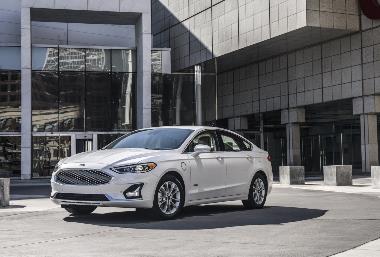
2019 Ford Fusion: Driver-Assist Technology and Design Tweaks Highlight Model Countdown
Tuesday, Oct 15, 2019
The Ford Fusion was launched in 2005 for model-year 2006, and the dour-door mid-size continues in its second generation, which began in 2012 and inclu …The Ford Fusion was launched in 2005 for model-year 2006, and the dour-door mid-size continues in its second generation, which began in 2012 and included a hybrid version. Following a facelift update in 2017, Ford revised Fusion again for 2019 with new front and rear fascias, new Co-Pilot360™ suite of driver-assist safety technologies, an increase in the “electric-only” range in its Hybrid, tweaked cosmetics and expanded feature and trim availability.Show More
Before we get to the 2019 model, Fusion should be here for a few more years. Ford initially planned to discontinue the Fusion along with its other sedans except Mustang, in North America in the next few years, as part of a plan to focus more on SUVs and trucks. However, as Fusion currently is the No. 21 best-selling vehicle in America (and No.7 top-selling sedan), the mid-size is expected to remain in production until 2021. However this year is the final year for the V-6–powered Fusion Sport.
Back to this year, the 2019 Fusion up-designs with new front and rear styling including a new grille featuring a five-bar design finished in chrome on S, SE and SEL models and new chrome mesh on Titanium. This sleeker Fusion also features a new trunk lid panel, fog lamps and LED taillamps, and two new wheel designs and fresh color palettes inside and out also debut for 2019 -- new colors include Agate Black, Velocity Blue and Rich Copper Metallic Tinted Clearcoat.
Big safety news is the debut of Ford Co-Pilot360™, which the Blue Oval calls, “the most advanced suite of standard driver-assist technologies.” The suite includes automatic emergency braking with pedestrian detection, blind spot information system, lane keeping system, rear backup camera and auto high-beam lighting that together, can help drivers operate with more confidence. And for green-minded customers, the 1.5-liter EcoBoost® engine is now standard on Fusion SE and higher trim levels, while the new Fusion Energi plug-in hybrid model is projected to have an EPA-estimated electric-only range of up to 25 miles – nearly 20 percent greater than the current model.
On the outside, in addition to its new front and rear lower fascias, the 2019 Fusion gets a new decklid panel, foglamps, LED rear tail laps, grille designs – chrome or mesh depending on trim – and wheel packages. At 191.8 inches long, 58.2 inches high on a 112.2-inch wheelbase, Fusion weighs in at 3472 lbs.
Powering up with an international flavor, Ford Fusion’s four-cylinder engines come with a range of horsepower and fuel economy ratings. The 2.5-liter inline-4 is built in Mexico and produces 175hp and 170 lbs.-ft. of torque; the 1.5-liter EcoBoost inline-4 is built in Romania and is rated at 181hp and 185 lbs.-ft. of torque; and the 2.0-liter EcoBoost inline-4 is built in Spain and delivers 240hp and 270 lbs.-ft. of torque. Economically, the 2.5 gets 22mpg city/34mpg highway and 26 mpg combined for the automatic, while the automatic 1.5 is rated at 24/36/28. My test 2.0 automatic with a six-speed transmission was rated 22/city, 33/highway and 26 combined. My week of testing in mixed-use scenarios averaged 24.5mpg.
I found acceleration to be decent for the niche with my test 2.0-turbo as my test Fusion completed a zero-to-60mph sprint in 7.2 seconds, en route to a 15.2-second quarter-mile. Highway passing and uphill trials were accomplished effortlessly and the cabin and engine were relatively quiet, thanks to a solidly performing paddle-shifted six-speed SelectShift Automatic™ transmission.
At mid- and low-speed, Fusion’s rack-and-pinion with electric power-assisted steering was aggressive in the corners with only slight understeer and yaw was negligible. Around town and at speed, steering is a bit vague, but the MacPherson strut independent front suspension stabilizer bar, working with an independent multilink rear with stabilizer bar smoothed out road irregularities and carried speed well, while the ABS brakes stopped confidently.
Interior dimensions are a bit tight up front with headroom of 39.2 inches and a confining 37.8 inches in row two. Front legroom is accommodating at 44.3 with 38.3 inches for rear passengers and shoulder room is 57.8 in row one and 56.9 in row two, and thick roof pillars inhibit sightlines..
The base 2019 Ford Fusion starts at $22,840, the hybrid model starts at $27,555, and the plug-in Fusion Energi starts at $34,595. My test Fusion came in five trims. The S was at the base price; the SE (my test ride) started at $24,120 with the 1.5-liter EcoBoost engine; SEL at $28,580; the luxury Titanium trim started at $34,340 and the V6 Sport at $40,015. The 2.0-liter EcoBoost engine added $2860 over the base and added the AWD configuration at no charge. My Oxford White (no-extra-charge) exterior paint was matched to an Ebony Black interior and added the Ford Co-Pilot Assist Package that included Adaptive cruise control with Stop-and-Go and voice-activated touchscreen navigation system with SiriusXM Traffic and Travel Link® for $655; carpeted cargo mats added $75 and with destination charges of $995, the sticker-as-tested was $29,350, but Available Incentives of up to $3250 may still be available in your area, so check with your dealer, as some Fusions as tested could be priced at $26,100.
> Visit www.CarlisleEvents.com for more on the automotive hobby.
Mike Blake, former editor of KIT CAR magazine, joined Carlisle Events as senior automotive journalist in 2004. He's been a "car guy" since the 1960s and has been writing professionally for about 30 years. </I>
-
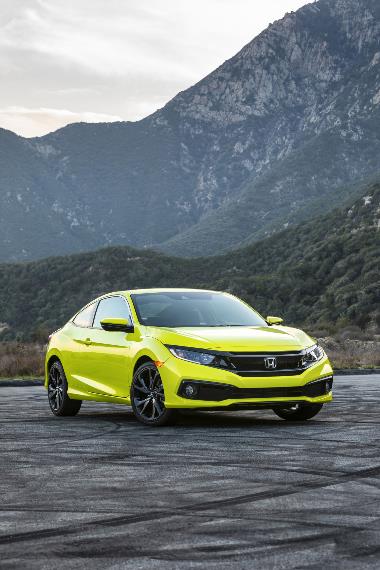
2019 Honda Civic Sport Coupe: Style and Handling Uptweaks at a Compact Price
Tuesday, Oct 8, 2019
A one-time econocar has evolved into a sporty, fun-to-drive compact that continues its legacy of good fuel economy and low pricing. The Honda Civic …
Show MoreA one-time econocar has evolved into a sporty, fun-to-drive compact that continues its legacy of good fuel economy and low pricing. The Honda Civic was born during the 1973 model year as an economical subcompact that addressed the U.S. oil and gas crisis. A top seller from the outset, Civic is the 6th top-selling vehicle of all-time worldwide, and currently the 9th best-selling vehicle (including trucks and SUVs) and No.2-top-selling car (classification) in the United States.
With multiple versions to appeal to many buying segments, Civic builds on its 10th generation which debuted in 2016, with a versatile lineup that includes a two-door coupe, a four-door sedan and a hatchback. Available in either of two four-cylinder engines and either a continuously variable automatic transmission or a six-speed manual, Civic has replaced boxiness with sporty architecture and builds on its sportiness with solid segment performance.
For 2019, the Civic line-up tweaks up with changes in styling, adding standard features, augmenting suspension and steering capabilities, and increasing the popular Sport trim across the coupe (hatchback) and sedan configurations. The new Sport front clip eliminates its chrome grille in favor of a stunning black insert. But chrome is not forsaken and is used to surround a new headlight and foglight design while relocating sensors used in the Honda Sensing Suite, which is now standard in all trims. Other changes include an upgraded audio system display, the addition of a volume knob on the updated optional infotainment touchscreen, larger cupholders, steering-wheel control modifications and improved sound insulation for a quieter cabin ride experience. From a performance perspective, the Sport trim now offers an optional non-turbo 2.0-liter engine in both the sedan or coupe.
I tested the Sport coupe, and was immediately impressed by the sportiness of this economical ride. Slotted between the LX and EX trims, the 2019 Civic Coupe Sport comes at you with that black grille that wraps into squint-eye headlights. Along the sides are upsized 18-inch wheels and angled body creases that create a perception of speed or motion waves; while in the rear, a black-painted decklid spoiler, Sport badging and a sport muffler capped by a wide, center-mounted chrome exhaust finisher complete the package.
Civic’s lightweight Advanced Compatibility Engineering™ body structure and rear frame structures, aid in occupant protection while minimizing weight for better fuel efficiency, and the Civic Sport’s angular unibody construction fits within Compact parameters at 177.3 inches long, 54.9 inches high and 70.9 inches wide on a 106.3-inch wheelbase for a curb weight of 2838 lbs.
Inside, the cabin is packed with high-quality, soft-to-the-touch materials and such convenience features as remote engine start, electronic parking brake, walk away door locking, dual-zone automatic climate control, heated front seats and rain-sensing wipers.
The cabin plays into its compact nature and measures a hunched 36.5 inches up front and only 34.5 inches in row two for the coupe. Legroom is comfortable at 42.3 inches in row one and 35.9 inches in the rear seats and shoulder room is 56.9 and 52.6.
The 2019 Honda Civic Sedan and Coupe LX and Sport trims are powered by a 2.0-liter 4-cylinder engine producing 158 horsepower and 138 lb.-ft. of torque. Connected to either a 6-speed manual transmission or CVT, EPA fuel economy ratings are 30mpg/city, 41mpg/highway and 34 mpg/combined.
CVT-equipped Civic EX, EX-L and Touring trims are powered by a 1.5-liter turbocharged 4-cylinder with peak output of 174 hp and 162 lb.-ft. of torque with top ratings of 32/42/35 for EX and EX-L trims. My week of testing with the 2.0-liter manual averaged 34.4 mpg.
The Civic Sport’s ride is compliant, road-hugging, highway confident, city proud and auto-cross worthy, with decent, but not explosive passing at speed. The attentive six-speed manual kicks in gently and during track tests, we didn’t perform as well with the 2.0-liter as we would have with the turbo -- maybe as much as 2 seconds slower -- but we did finish off a 9-second sprint to 60mph and a 17-second quarter-mile.
The steering is balanced and obedient, with minimal body roll and predictability in hard cornering. The sound insulation really cuts down cabin noise and the stiff suspension levels out most road irregularities.
The 2019 Honda Civic also features a long list of standard active and passive safety features including the Honda Sensing® suite of safety and driver-assistive technologies that includes Adaptive Cruise Control with Low-Speed Follow, Collision Mitigation Braking System™ incorporating Forward Collision Warning , Lane Keeping Assist System and Road Departure Mitigation incorporating Lane Departure Warning. Additionally, all Honda Civic models receive automatic high beams as part of their Honda Sensing® package.
The 2019 Honda Civic Coupe starts at $20,750 in LX trim, and runs through four trims, topping out at the Touring based at $26,950. My Sport (second trim up) test ride based at $21,550 with the 6-speed manual and 2.0-liter engine.
In cool Tonic Yellow exterior paint (at no extra charge) matched to a Black cloth interior, my test ride added Body Side Molding for $217, Door Edge Guards for $59, all-season floor mats for $155, Automatic-dimming mirror with HomeLink® for $418, and destination and handling charges of $930, for a sticker-as-tested of $23,378.
<I> Visit www.CarlisleEvents.com for more on the automotive hobby.
Mike Blake, former editor of KIT CAR magazine, joined Carlisle Events as senior automotive journalist in 2004. He's been a "car guy" since the 1960s and has been writing professionally for about 30 years. </I>
-
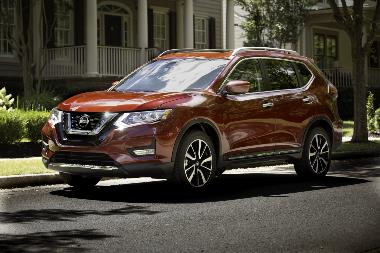
2019 Nissan Rogue: Compact crossover delivers premium look and feel with added tech and cosmetics
Tuesday, Oct 1, 2019
Currently the 7th top-selling vehicle in America – the 3rd best-selling crossover – the 2019 Rogue is also Nissan’s top-selling vehicle. Rogue debuted …Currently the 7th top-selling vehicle in America – the 3rd best-selling crossover – the 2019 Rogue is also Nissan’s top-selling vehicle. Rogue debuted in 2007 for the 2008 model year as Nissan’s entry-level compact sports-ute, and began its second generation in 2013, earning a solid rep among buyers as it climbed the ranks of top-sellers.Show More
Sporty and versatile, the 2019 Rogue follows extensive enhancements last year by adding tech and cosmetics in each trim level. Expanded technology includes standard Lane Departure Warning, Intelligent Lane Intervention, Automatic Emergency Braking, with Pedestrian Detection and High Beam Assist, across all grade levels; Rear Automatic Braking and a Rear Sonar System have been added as standard on SV and SL grades; an Innovative Rear Door Alert was added to all grade levels -- reminds the driver to check the back seat before exiting the vehicle; the SV trim gets a new Premium Package with 18-inch aluminum-alloy wheels, ProPILOT Assist and available electronic parking brake; and the S trim gets a new Special Edition Package -- 17-inch aluminum-alloy wheels, heated exterior mirrors with integrated LED turn signals, leather-wrapped steering wheel and shift knob, heated driver's and front passenger seat, and chrome exterior and interior door handles and roof rails.
Offered in three well-equipped grade levels, S, SV and SL -- Rogue eliminated its third row of seating a few years back, but it fits the demand for an upscale compact crossover with dimensions of 184.5 inches in length; 72.4 inches in width and 66.6 inches in height on a 106.5-inch wheelbase. Minimum ground clearance is 8.4 inches (AWD), and curbweight for the AWD in SL trim is 3614 lbs. Assembled in Smyrna, Tennessee, Rogue’s unibody construction utilizes corrosion-resistant and high-strength steel, with a premium look and feel from its signature “V-Motion” grille and headlights to its LED boomerang signature taillights.
Rogue’s refined interior presents a premium look and feel, and is enhanced with a D-shaped steering wheel and leather-booted sport-mode shifter, available heated steering wheel, memory for driver's seats and mirror, and remote engine start.
Interior sightlines are impeded by thick rear roof pillars, but Rogue’s cabin is roomy for a smaller SUV with 41.6 inches of front headroom and 38.5 inches in row two. Interior legroom is comfortable in front at 43.0 inches and relatively comfy in row two at 37.9 inches. Shoulder room is 56.6 in front and 55.9 and in the rear.
Rogue continues to offer one standard power source, a transverse 2.5-liter inline-4-cylinder DOHC engine that provides 170 horsepower and 175 lb.-ft. of torque. Coupled with an Xtronic CVT® (Continuously Variable Transmission) with standard Sport Mode and Eco switches, Rogue is EPA rated at 25mpg/city, 32mpg/highway and 28mpg/overall, and a week of mixed-use testing averaged of 26.6mpg. From a stop and also at speed, acceleration is uninspired but predictable, and uphill grades and passing at speed require some strategy. Steering seems stiff, and the electric power-assisted power assisted rack-and-pinion steering exhibited understeer during quick maneuvers. Track times were finished off in a 9.3-second zero-to-60mpg sprint and a perceptibly slow 17.4-second quarter-mile.
The driving experience is smooth for the niche, with firm on-pavement engagement from independent strut front suspension, coil springs and an independent multi-link rear, though Rogue does not appear to be suited for severe off-road challenges.
Earning top marks for safety, Rogue Safety Shield technologies include radar-based Blind Spot Warning and Rear Cross Traffic Alert. Additionally, Rogue is constructed with zone body construction with front and rear crumple zones; energy-absorbing steering column; hood-buckling creases and safety stops; body side reinforcements; shift interlock system; vehicle security system; vehicle dynamic control and traction control system. And you get the Nissan Advanced Air Bag System with dual-stage supplemental front air bags with seat belt and occupant-classification sensors, driver and front-passenger seat-mounted side-impact supplemental air bags, and roof-mounted curtain supplemental air bags with rollover sensor for outboard occupant head protection for all rows.
The 2019 Nissan Rogue starts at $25,020 for the base S trim in FWD and $26,370 for AWD. The SV trim adds 17-inch aluminum-alloy wheels, Nissan Intelligent Key® with push button ignition, blind spot warning, rear cross traffic alert, dual zone automatic temperature control and a 6-way power driver's seat to the base S, and starts at $26,440 in FWD and $27,990 in AWD. The top trim Rogue SL I tested starts at $31,490 in FWD and $32,840 in AWD and gains Nissan Door to Door Navigation with Premium Traffic, Intelligent Cruise Control, Automatic Emergency Braking with Pedestrian Detection and Leather-appointed seats. Hybrid models start at $27,700 and run to $32,990 before options.
My test 2019 Rogue SL added the SL Premium Package for $1820, which included a power panoramic moonroof and LED headlights. The SL Platinum Reserve Interior Package, for $250, added leather-appointed seats with quilted leather inserts and Piano Black door finisher; roof rail crossbars added $365; four splash guards added $170; and a chrome rear bumper protector was $165. A cool and high-tech 360-degree exterior impact sensor added only $125 and a moonroof wind deflector also added $125. With destination and handling charges of $1045, my 2019 Rogue SL-as-tested came in at $36,905.
Written by Mike Blake, former editor of KIT CAR magazine, joined Carlisle Events as senior automotive journalist in 2004. He's been a "car guy" since the 1960s and has been writing professionally for about 30 years. -
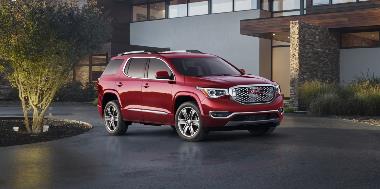
2019 GMC Acadia Denali: Loaded for Comfort, Connectivity and Driving Versatility
Tuesday, Sep 24, 2019
The GMC Acadia was launched in 2006 for the 2007 model year, and was re-engineered for 2017 as a second-Gen mid-size crossover that is smaller, lighte …The GMC Acadia was launched in 2006 for the 2007 model year, and was re-engineered for 2017 as a second-Gen mid-size crossover that is smaller, lighter, and more technically and cosmetically advanced than the original, with hipper styling cues. Offering greater maneuverability than the first-generation model, this second-Gen sports-ute is a sibling to the Chevrolet Traverse and shares the same platform and mechanical components with its midsize sister, but most everything else, from grillework, to interior styling to equipment, differs, as Acadia is more trendy, round and intuitive inside, while Traverse seems to be more pedestrian.Show More
New for 2019 are the Acadia Black Edition that is available on SLT model and includes 20-inch machined aluminum wheels with black accents, black grille insert , black surround, black headlamp and taillamp details, and black mirror caps, roof rails and additional exterior accents. Also new are a 17-inch wheel design and P255/65R17 all-terrain tires available on All Terrain, as well as new exterior colors: Dark Sky Metallic, Pepperdust Metallic, Red Quartz Metallic and Smokey Quartz Metallic.
Vehicle highlights include: Traction Select that allows driver to adjust vehicle performance for various road conditions; active upper and lower grille shutters; power programmable liftgate; three rows of seating, including second-row captain’s chairs or split-folding bench; tri-zone automatic climate control; standard GMC Infotainment system with 7-inch-diagonal color touchscreen, and an available 8-inch system with navigation. Other Acadia amenities include Apple CarPlay and Android Auto phone projection capability; Teen Driver is standard on all models; Keyless Open and Start is standard on all models and an available Tow Vision Trailering System, which uses the rear-vision camera to help line up the hitch with a trailer.
I tested the upscale Denali, built at GM’s Spring Hill, Tennessee assembly facility with 65 percent U.S./Canadian parts. With body-frame integral construction, the structure incorporates press-hardened, high-strength steels, which allows thinner components in some areas offering comparable or better crash performance than conventional materials as well as providing reduced curb weight.
A refined mid-size crossover, Acadia measures 193.6 inches long; 66 inches high and a widebody 75.4 inches wide on a 112.5-inch wheelbase. Ground clearance is 7.2 inches and curbweight comes in at about 3956, though the upscale versions with the 3.6-liter engine should exceed 4000 pounds.
Acadia offers two engine choices: a 2.5-liter Inline-4 engine that provides 193hp and 188 lbs.-ft. of torque and an EPA rating of 21/city and 26/highway; or a 3.6-liter V-6 engine mated to a Hydra-Matic 6T70 six-speed automatic transmission. The system delivers 310 hp and 271 lbs.-ft. of torque, for an EPA rating of 18/city and 25/highway. Mated to a 6T70 six-speed automatic transmission, my 3.6-powered Denali was attentive, responsive and confident, and averaged 21.1 mpg with long stretches of highway cruising making up the largest part of my tests.
Providing a sporty and comfortable driving experience, Acadia’s electric variable-effort power steering with Active Return Assist was predictable, and minimized body roll and understeer in corners, while the MacPherson strut front suspension with direct-acting stabilizer bar worked well with the five-link independent rear with coil springs and stabilizer bar to level highway and city road irregularities. Softroad excursions were fun, but I am not sure Acadia is a true off-roader.
Generous and well-appointed inside, the Acadia cabin provides seating for five, six, or seven passengers depending on model and configuration. My six-passenger Denali offered a roomy 40.3 inches of front headroom without a sunroof (you lose about 1.2 inches with a sunroof), and 39.6 in row two. The third row allows 37.2 inches. Legroom was 41 inches in front and 39.7 in the second row and a child-worthy 31.1 in row three, while shoulder room came in at 59.4, 58.7 and 54.3 Cargo volume was 41.7 cu.ft. behind row two if row three is eliminated.
Safety features include standard head curtain side air bags with rollover protection for all seating rows and roof-mounted head curtain air bags, Front and Rear Parking Assist, Lane Change Alert, Front Pedestrian Braking, Low Speed Forward Automatic Braking, Forward Automatic Braking, Following Distance Indicator, IntelliBeam automatic headlamp high-beam control, Surround Vision camera system, Forward Collision Alert and more.
Acadia’s base SL trim starts at $30,195 and runs through six levels to get to the top-of-the-line Denali that I tested – starting at $46,695. In the lesser trims, you pay about $1095 for the upgrade to the larger engine – Denali comes with the larger plant as standard. You also pay from $2000 to $5000 to upgrade from FWD to AWD depending on trim level, the higher the level the less the increase, so with Denali, we were only hiked by $2000 for AWD. Red Quartz Tincoat exterior paint added $495 and the outside was mated to a Jet Black perorated leather interior. The Technology Package that is a “must” for the safety conscious was also included for $1495, consisting of advanced adaptive cruise control with full speed front automatic braking and a surround vision system. The Interior Protection Package for $300 added all-weather floor mats and cargo mats throughout. Rear seat infotainment with DVD player would have added $1995, but my ride was without that option, though we did add Wireless charging for $375. With an additional $1195 for Destination charges, my final sticker-as-tested was at $51,460, but cash allowance incentives of $4250 brought the MSRP to $47,210, so check with your local dealer.
<I> Visit www.CarlisleEvents.com for more on the automotive hobby.
Mike Blake, former editor of KIT CAR magazine, joined Carlisle Events as senior automotive journalist in 2004. He's been a "car guy" since the 1960s and has been writing professionally for about 30 years. </I>
-
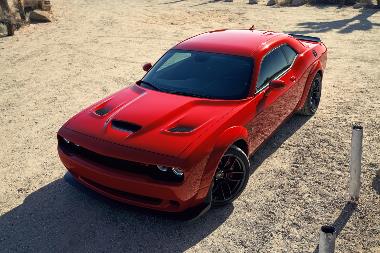
2019 Dodge Challenger: Adding Even More Muscle to its Legacy
Tuesday, Sep 17, 2019
Fifty years ago, Dodge entered the American “Muscle Car” Wars with the 1970 Challenger, debuting in fall 1969 with a Chrysler “E-body” short-deck, lon …Fifty years ago, Dodge entered the American “Muscle Car” Wars with the 1970 Challenger, debuting in fall 1969 with a Chrysler “E-body” short-deck, long-hood platform it shared with the Plymouth Barracuda. In those days, 425 horses muscled up Challenger from a 426 c.i. HEMI; and some trims only got you 145hp from a 225 6-cylinder option. Challenger ceased production in 1974 and returned as a retro-luxury-muscle car in 2008. Following a re-design in 2015 that built on the 1970s architecture, Challenger has added a few cosmetic, trim and wheel options each year, and introduced a 707-hp Hellcat in 2017. New for 2019, if 707 hp wasn’t enough, Challenger sets the bar even higher with a new 797-hp SRT Hellcat Redeye model, and other Hellcat models get a 10-hp increase to 717 horses.Show More
Also for 2019, Challenger’s SXT and GT models are available in both RWD and AWD; the GT trim gains a performance hood and front splitter; R/T Scat Pack models come with a new standard power-bulge aluminum hood; Hellcat models now come with a new dual snorkel hood; in R/T models, the rear seats can be deleted at the cost of $1 and have a net weight savings of 55 lb; some cosmetic, wheel, tires and performance items have been added as options and the SRT 392 and limited-edition SRT Demon have been eliminated.
Assembled in Brampton, Ontario, Canada, Challenger comes at you with a 1971-style split grille, projector headlamps with halo light-emitting diode surrounds and LED tail lamps. In the rear are a body-colored rear spoiler and dual-chromed exhaust tips integrated into the lower rear fascia. My test Challenger R/T measured an aerodynamic 197.9 inches in length, 75.7 inches in width and 57.5 inches in height on a 116.2-inch wheelbase, providing running ground clearance of 5.2 inches. My R/T trim weighed in with a curbweight of 4177 lbs. – some Challenger models hit 4500 lbs.
Challenger power is unparalleled, available with five engine choices and either manual or automatic transmissions. The muscle champion is a supercharged 6.2-liter HEMI Hellcat High Output V-8 that thunders out 797hp and 707 lb-ft of torque -- EPA-rated at 13mpg in the city and 22mpg on the highway. The 6.2-liter supercharged HEMI Hellcat V-8 muscles-up with 717 hp and 656 lb-ft torque, EPA rated at 13mpg/city and 21mpg/highway. The 392 c.i. (6.4 -liter) HEMI V-8 charges out 485hp and 475 lb-ft of torque, EPA rated at 15/city and 25/highway. The 5.7-liter HEMI V-8 and its 372 horses and 400 lb.-ft. of torque that powered my test Challenger R/T, is EPA-rated at 16/city and 25/highway; and a 3.6-liter Pentastar V-6 is also offered, delivering 305 hp / 268 lbs.-ft., rated at 19/city, 30/highway (RWD).
My Challenger R/T test ride was muscle car quick, both on the highway and on the track. I blazed down the dragstrip in a 5.9-second (hand-timed) zero-to-60-mph dash, and a 14.3-second quarter-mile. For comparison, the top-power, Challenger SRT Hellcat Redeye with its 797-hp power plant has been factory tested in a 3-second 0-60mph sprint and a quarter-mile elapsed time of 10.8 seconds.
But my Challenger R/T and its 372-hp 5.7-liter HEMI engine mated to a Tremec 6-speed manual transmission will generate more sales, so I tested it that way and was more than satisfied with its performance. While there is slight hesitation when pedal stomping at speed to pass or overtake a hill on the interstate, it is undeniably powerful and attacks the highway confidently while being smooth and a head-turner around town.
Gentle for passengers, Challenger’s independent SLA double-wishbone front and five-link independent rear suspension smooth out most irregularities and while there is some float at high speed reminiscent of 1970s road feel, and the steering shows some rear sway in quick turns at speed, the available SRT-tuned suspensions in Sport Mode gives a track-worthy feel.
Inside the 2019 Dodge Challenger is a performance-focused cockpit, featuring refined materials, execution and technology, also inspired by the interior of the 1971 Challenger. The cabin seats five and accommodates with 39.3 inches of front headroom and 37.1 inches in row two; leg room of 42.0 inches in front and 33.1 inches in the rear, and shoulder room of 58.5 and 53.9.
Challengers run the gamut from a $28,095 base for the SXT trim, to $77,945 for the 797-hpSRT Hellcat Redeye Widebody. While little is more exhilarating to a car guy than a street-legal 797-hp iconic muscle car, I tested the third-trim up in the line, the R/T, as that is the model more purchasers will buy. In RWD configuration the base was $34,545.
In ToRed exterior paint, my test ride eschewed many decal cosmetics that would have been really cool at little or no cost, and it came outfitted with cloth seats, though I would have liked leather available in packages that would have added $5000 or more, so we went cloth and lean. A sunroof would have added $1295, but that was also left off so we went for entertainment and added an Alpine Audio Group with subwoofer for $995 and a UConnect 4C navi system with 8.4-inch display screen for $1095. The Driver Convenience Group added Blind Spot and Rear Cross Path Detection, High Intensity Discharge Headlamps, power multi-function mirrors with manual fold-away Rhombi Illuminated Air Catcher headlamp for $1295.
My ride had the fun-to-drive 6-speed manual transmission (an automatic 8-speed trans would have added $1595), so we saved money there, and Destination charges of $1495 put my 2019 Challenger R/T at $39,045.
> Visit www.CarlisleEvents.com for more on the automotive hobby.
Mike Blake, former editor of KIT CAR magazine, joined Carlisle Events as senior automotive journalist in 2004. He's been a "car guy" since the 1960s and has been writing professionally for about 30 years. </I>
Book with a preferred Hotel

Book online or call (800) 216-1876
